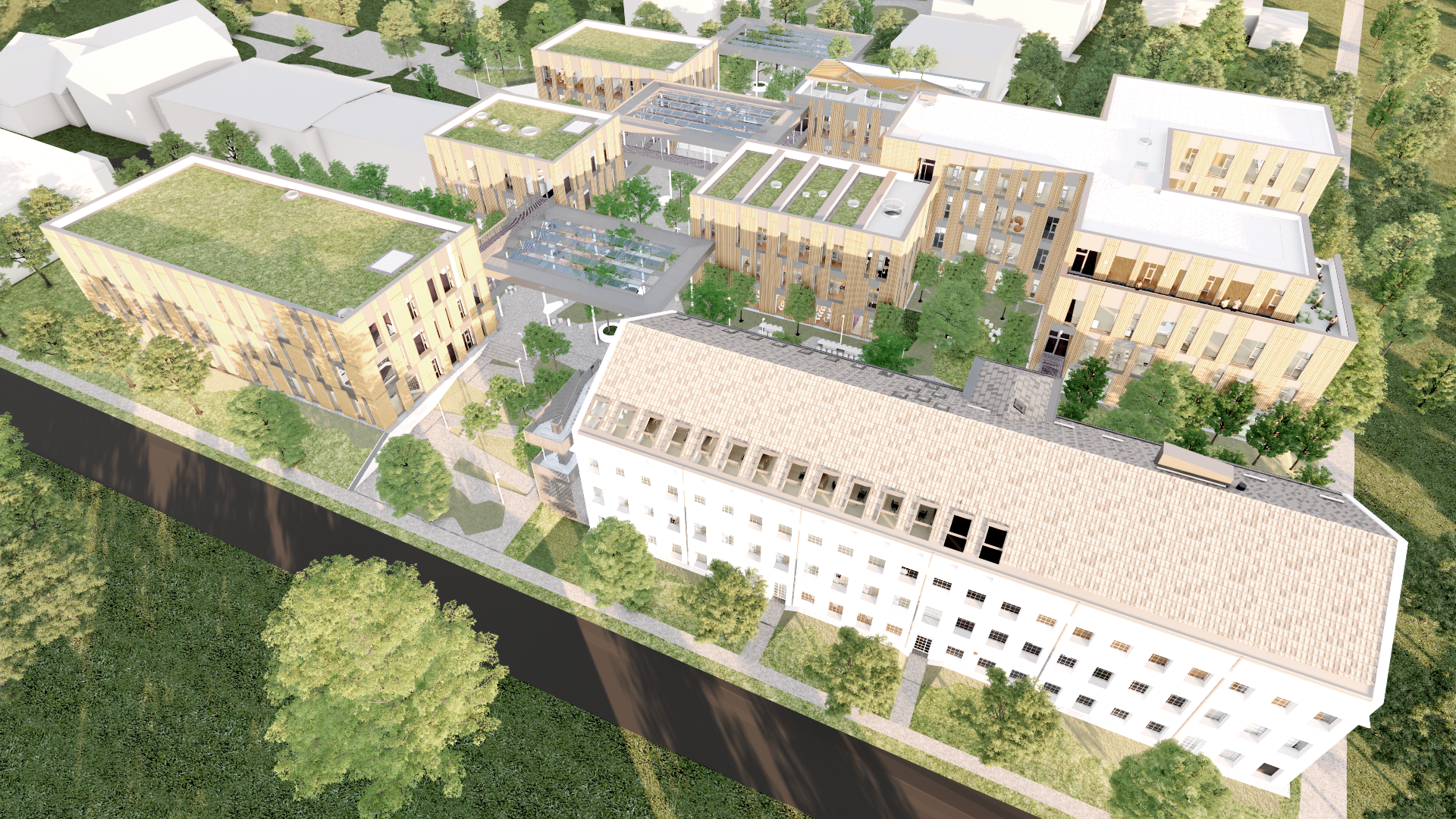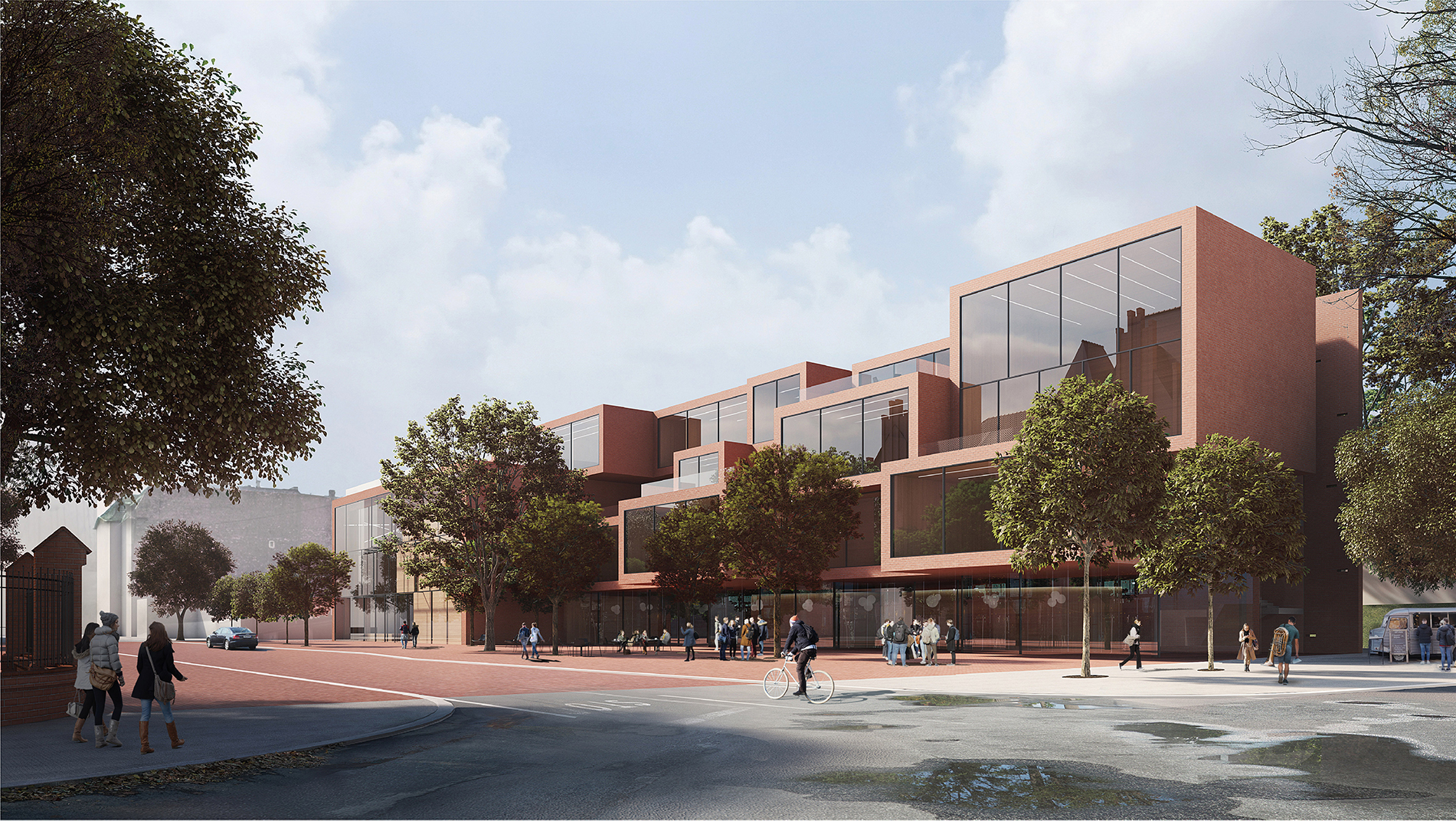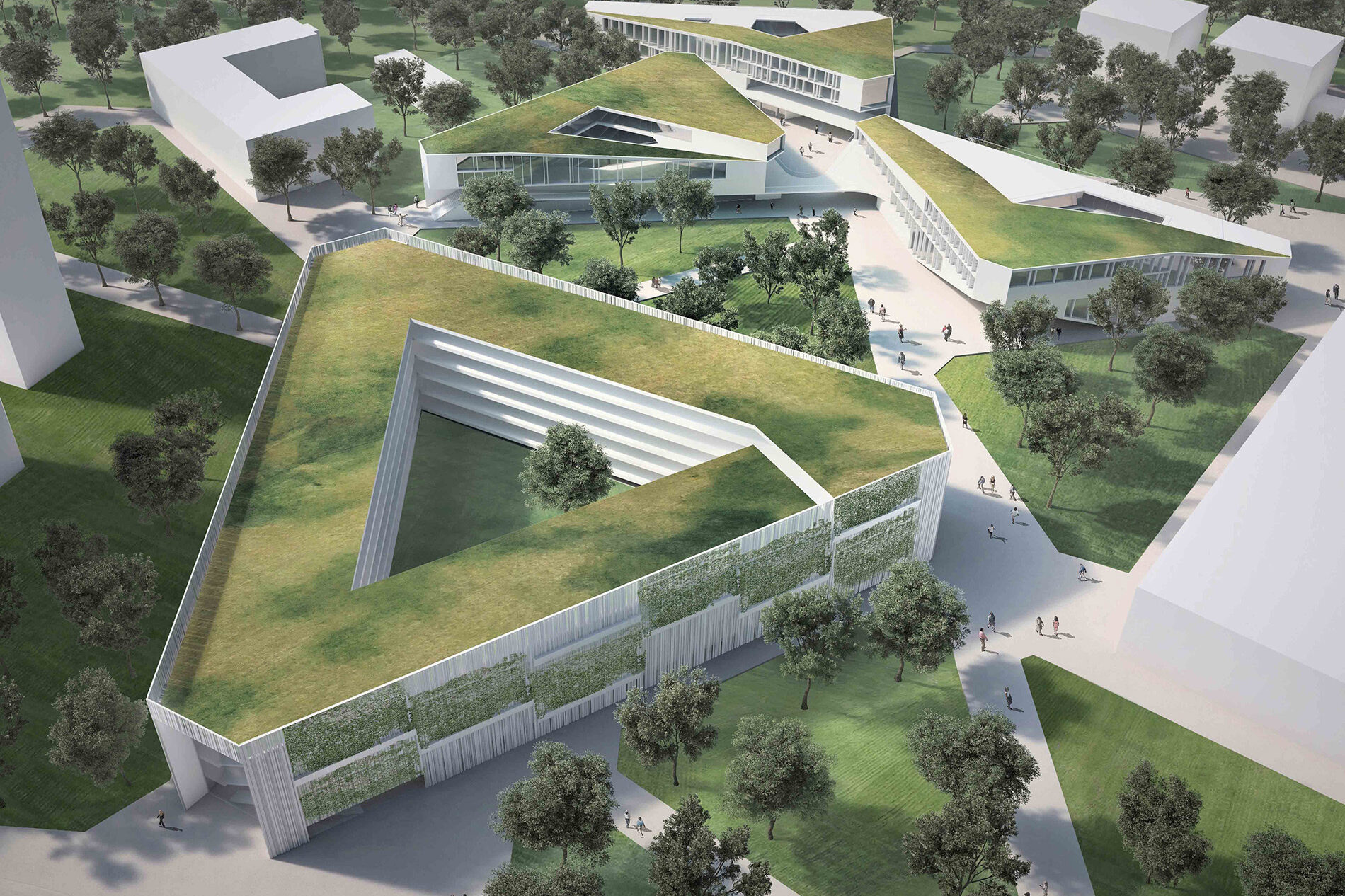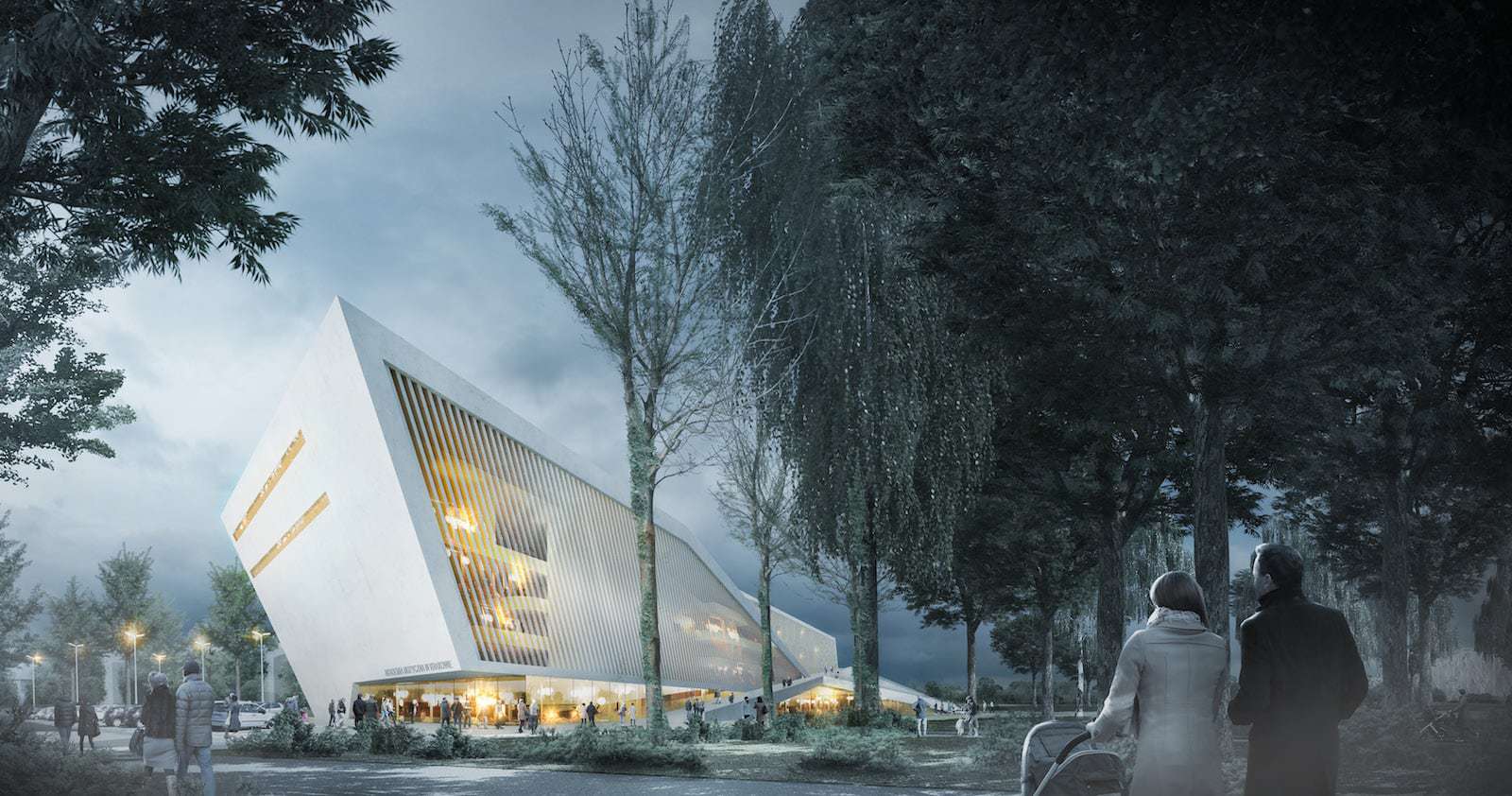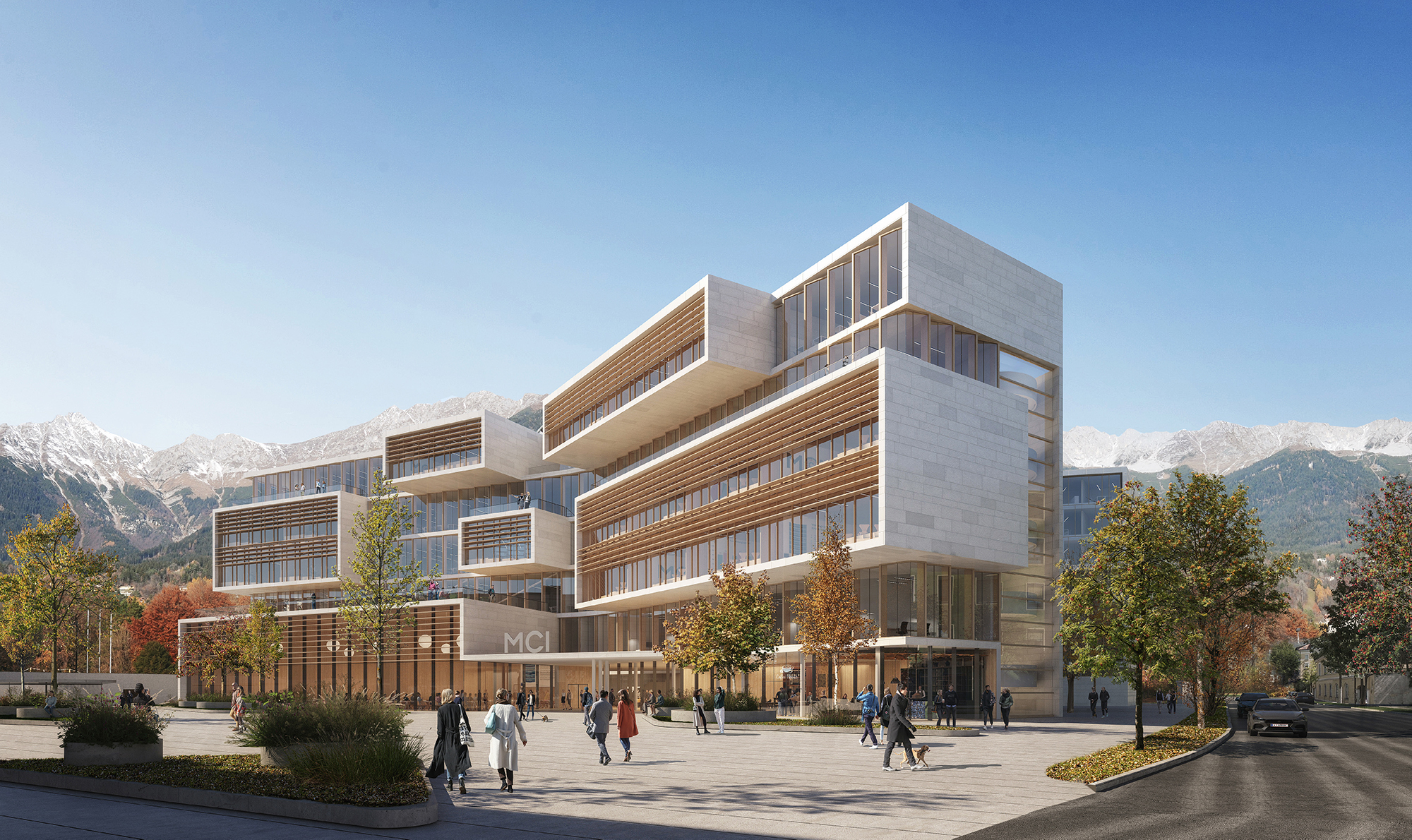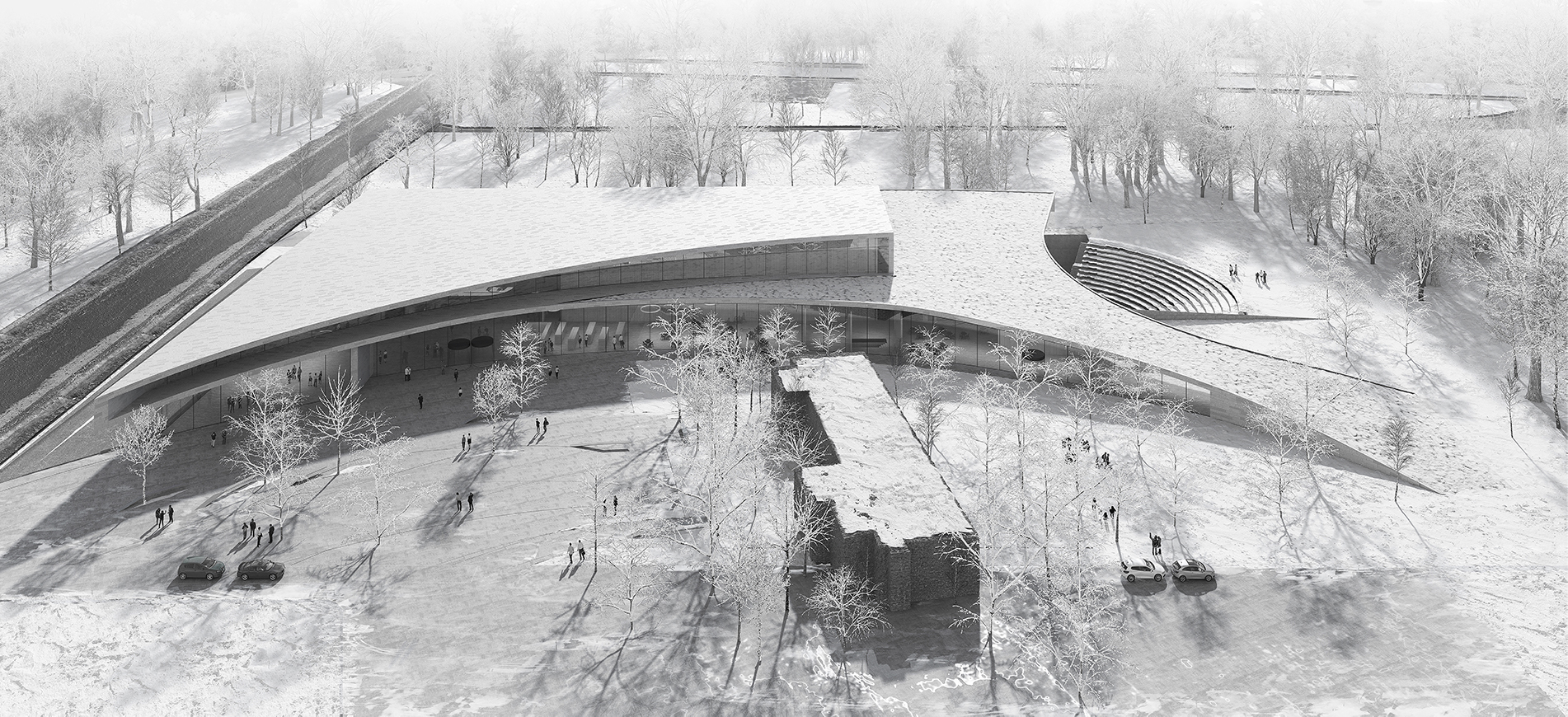Future Art Lab
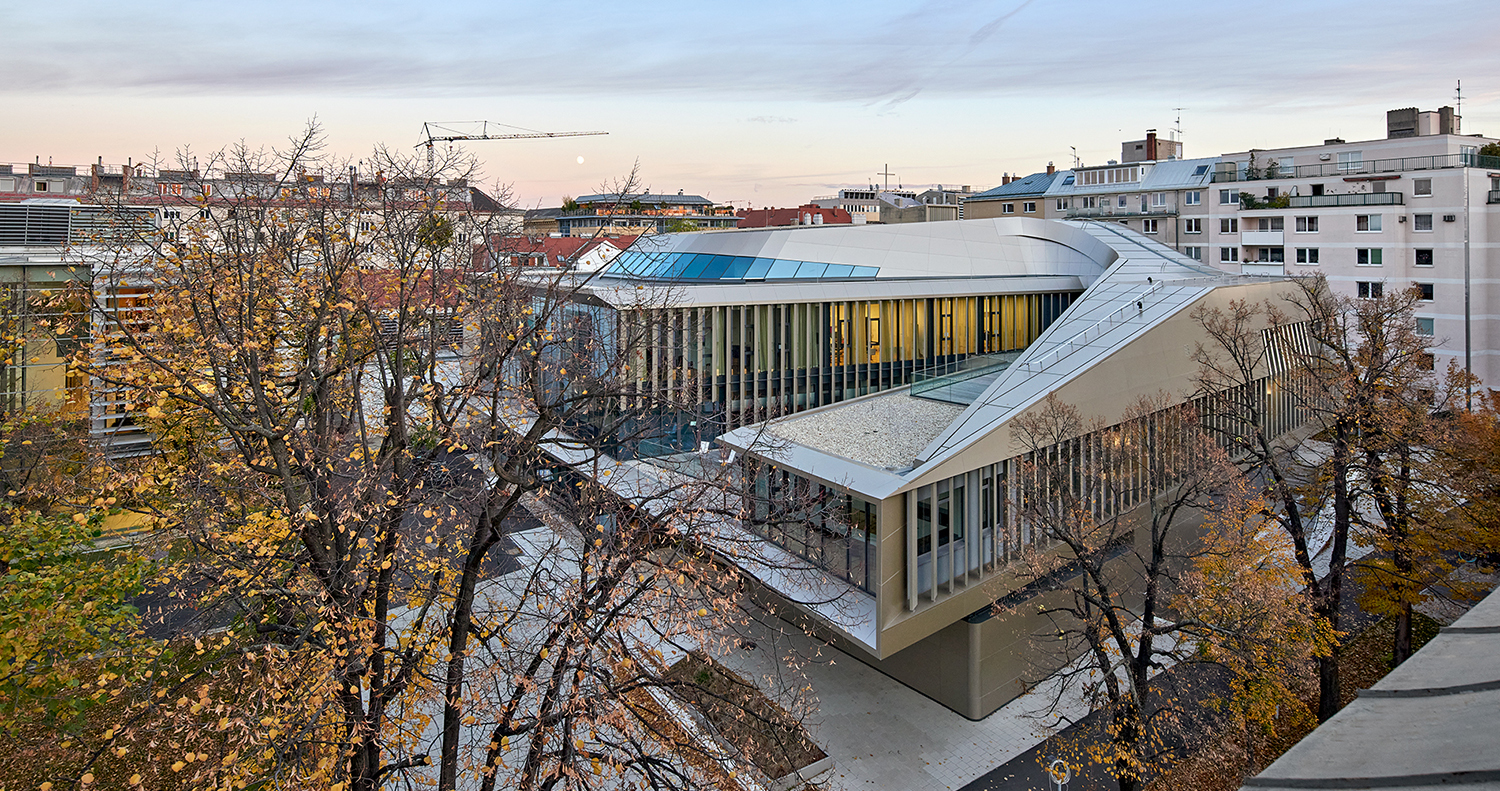
The new building for the Future Art Lab will complete the development of this special campus, which is reminiscent of Anglo-American models and is unique for Vienna.
Year
2014
Venue
Vienna
State
Completed
Category
Education
Size
7.370 m²
Year |
Venue |
State |
Category |
Size |
|---|---|---|---|---|
2014 |
Vienna |
Completed |
Education |
7.370 m² |
Year
2014
Venue
Vienna
State
Completed
Category
Education
Size
7.370 m²
FAL
On account of this, and due also to it location at a prominent position, this building has a special importance, which makes it possible to especially accentuate the canon of the buildings on the campus at this point.
On the other hand to exert a particular dominance here would be inappropriate. A moderate height, integration with the neighbouring buildings in terms of volume, and spatial and functional references to the central open area, the “campus” in the literal sense of the term, appeared important. The building is seen as a pavilion which makes a gesture of opening towards the middle of the university and which can also respond to urban references.
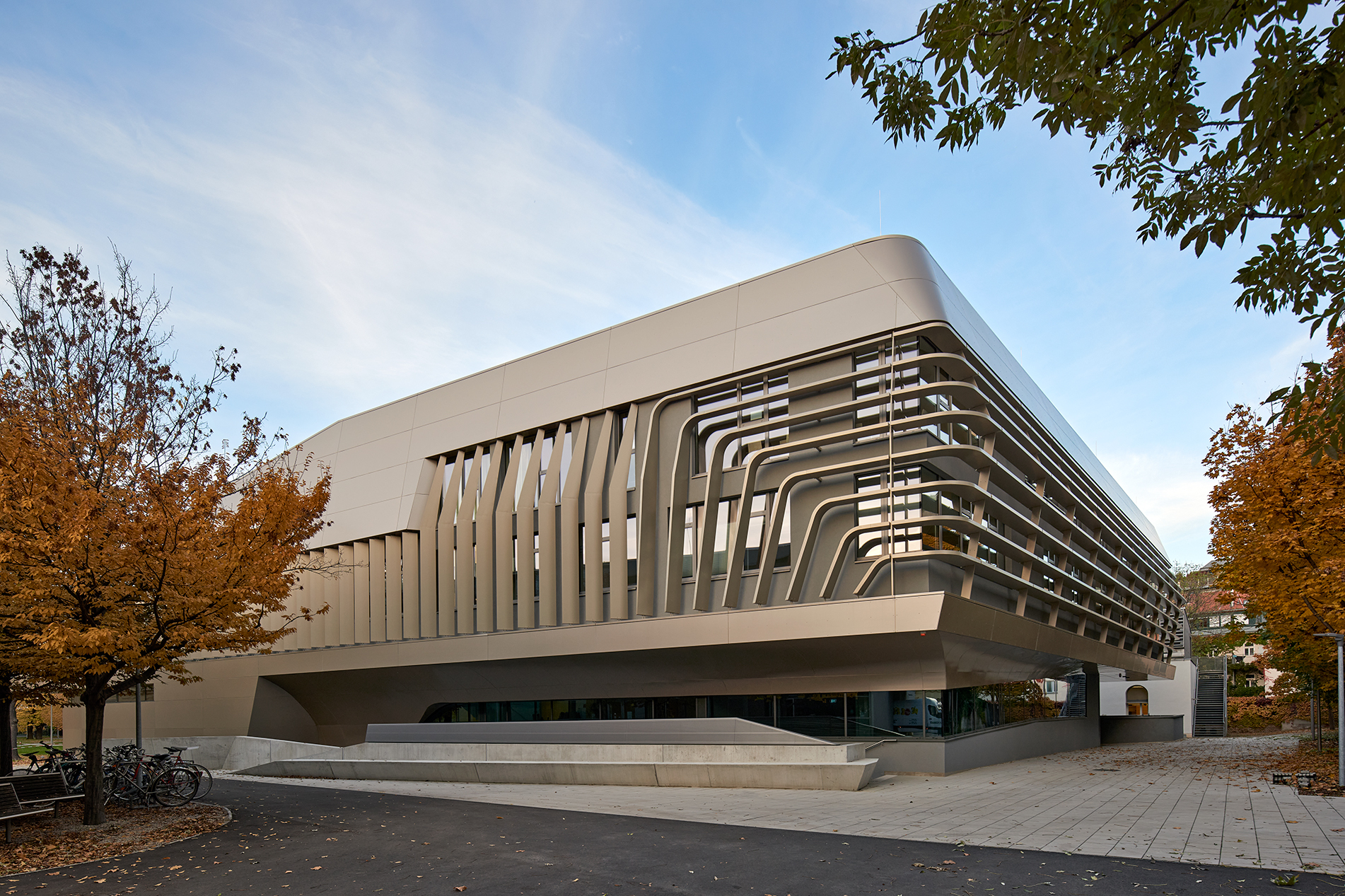
The result is a free-standing, embedded building which can very much be understood as an apparatus, an appliance for playing, composing and experimenting with and on film and music.
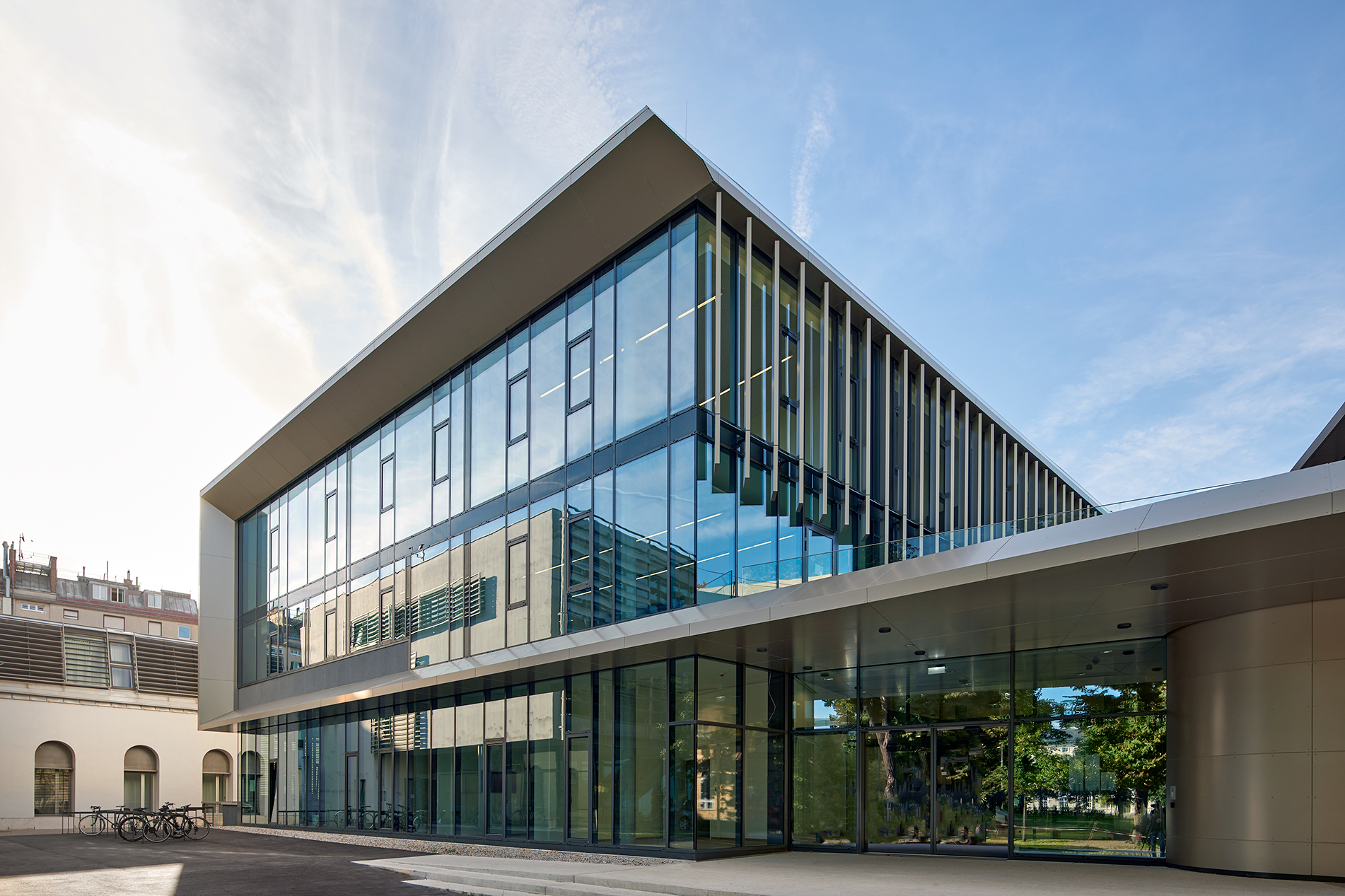
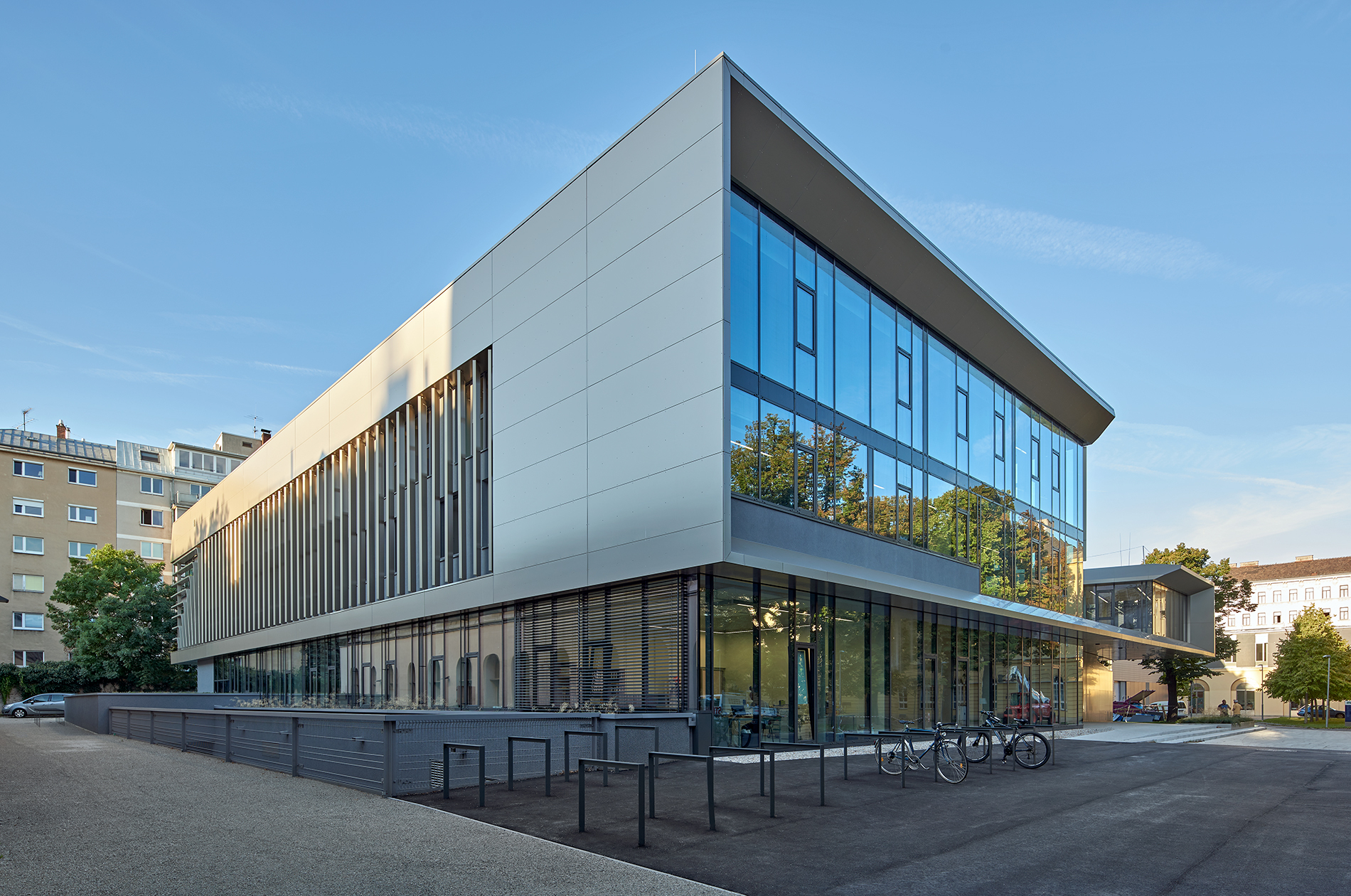
In urban planning terms the project responds in a special way to the landscape quality of the outdoor space in that the latter, continued in perspective upwards, offers users additional qualities as somewhere to linger on the short route to the outside. The functions develop in an entirely natural way along generous circulation areas that also provide spaces of real quality ideal for casual meetings or as somewhere to spend time. The circulation between the different storeys and three-dimensionally within the building ensures excellent and easy orientation. (Jury)
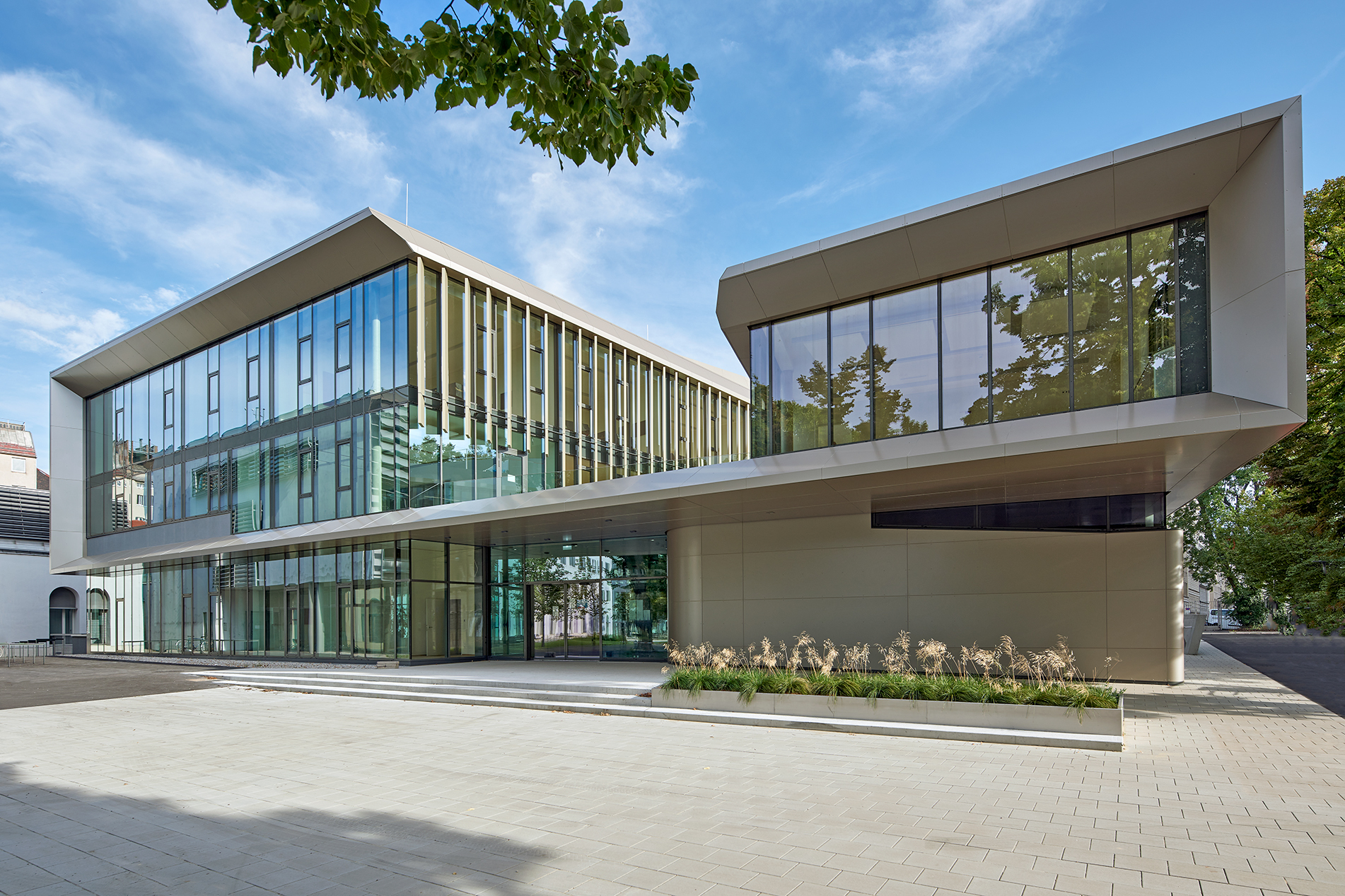
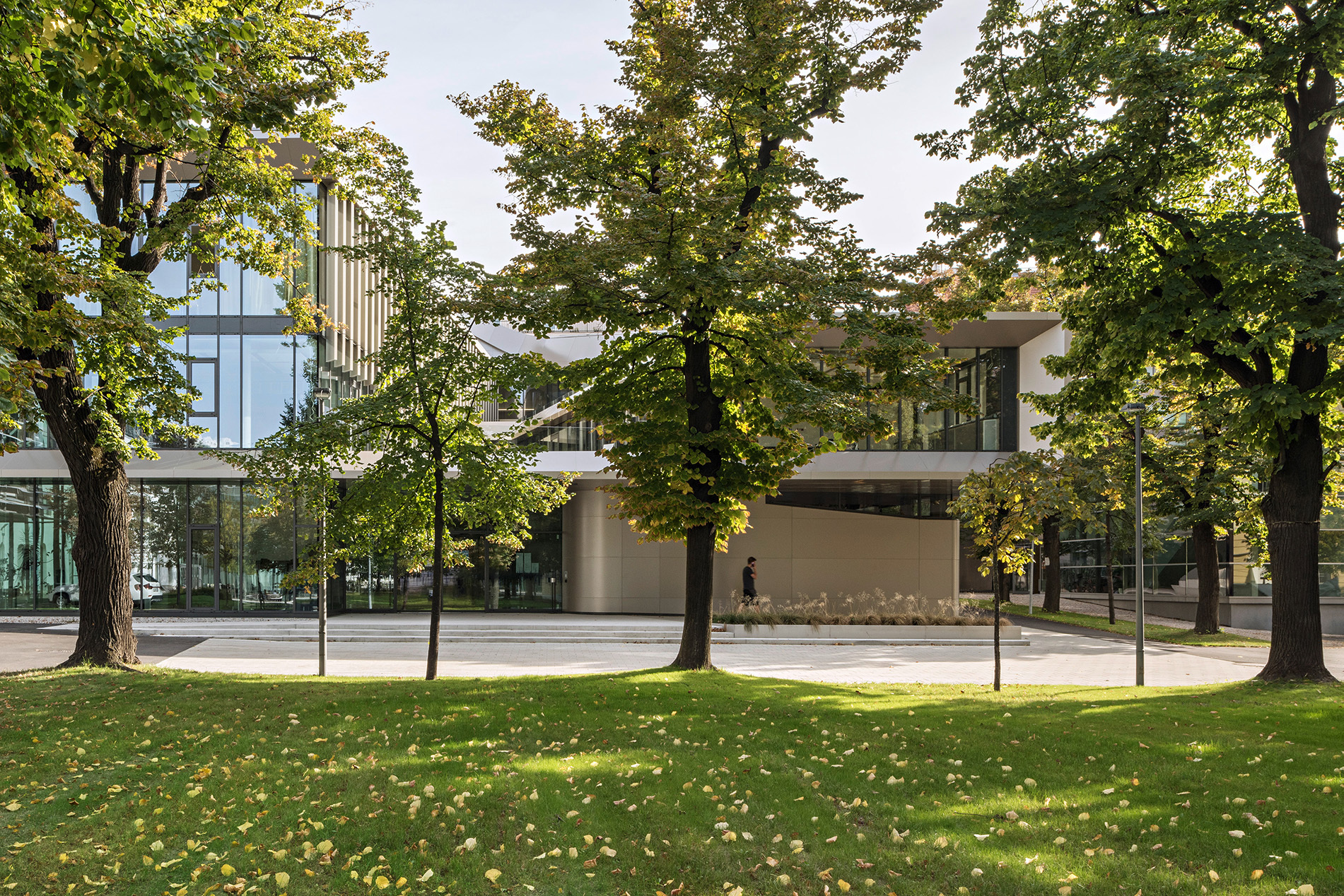
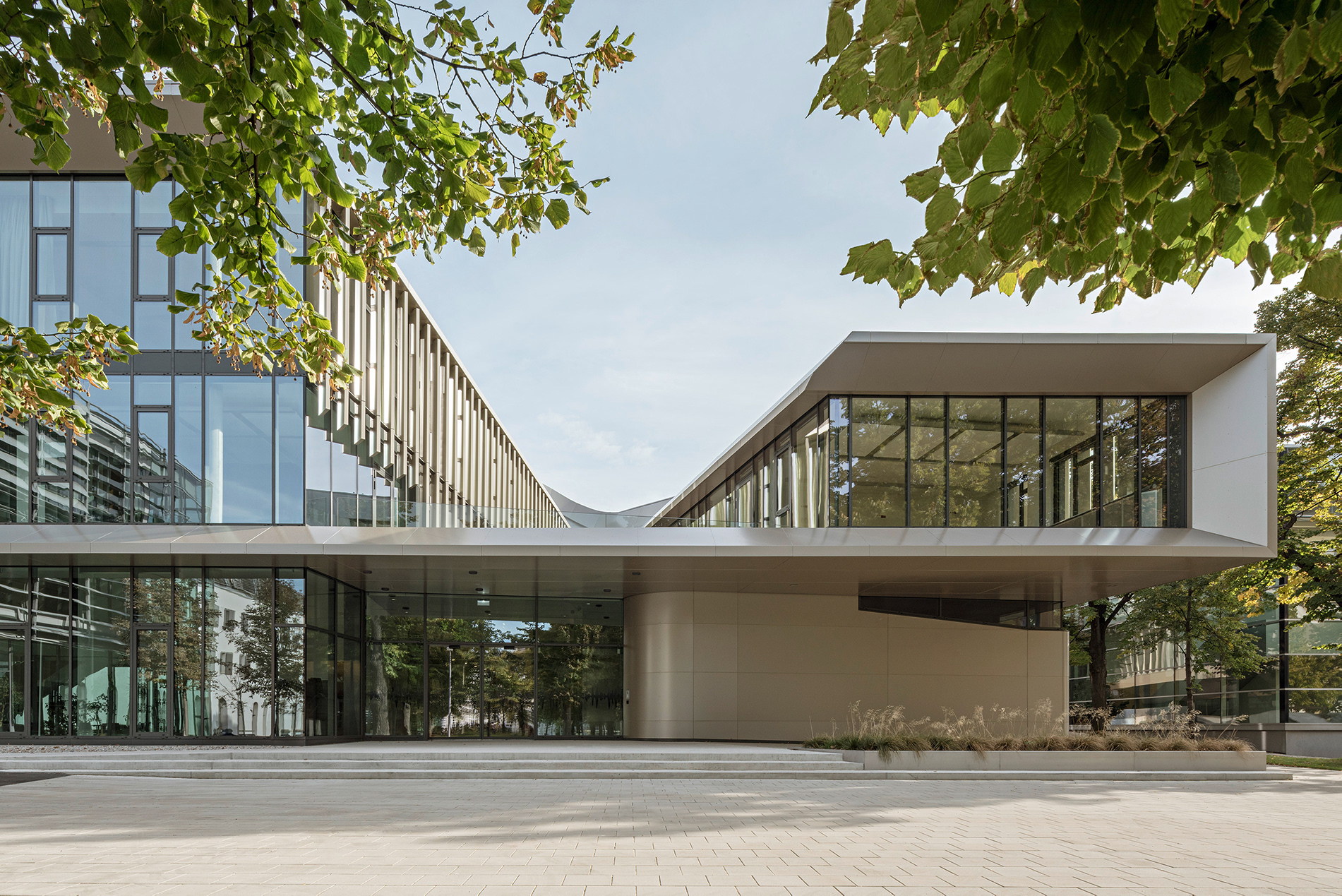
As the internal loads (heat sources) are very large, it is most important to reduce the entry of (solar) energy from outside. This is achieved by the extensive use of sun protection louvers that also play an important, form-shaping role in the architectural design.
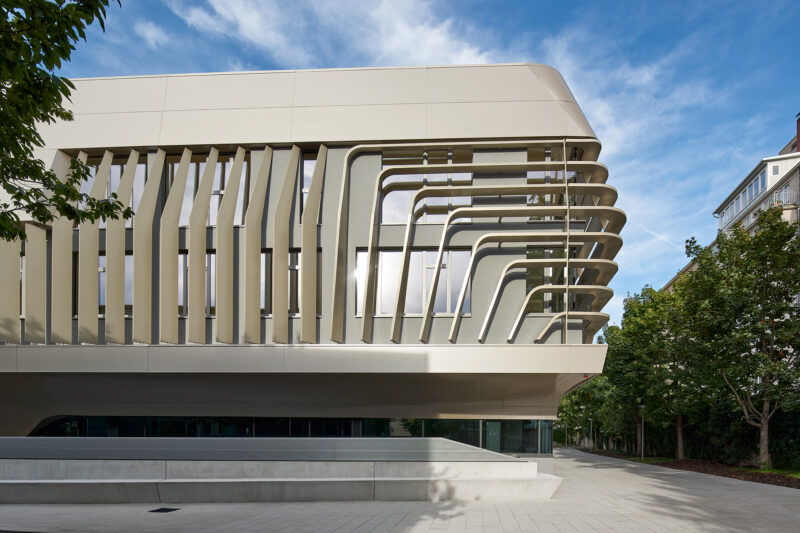
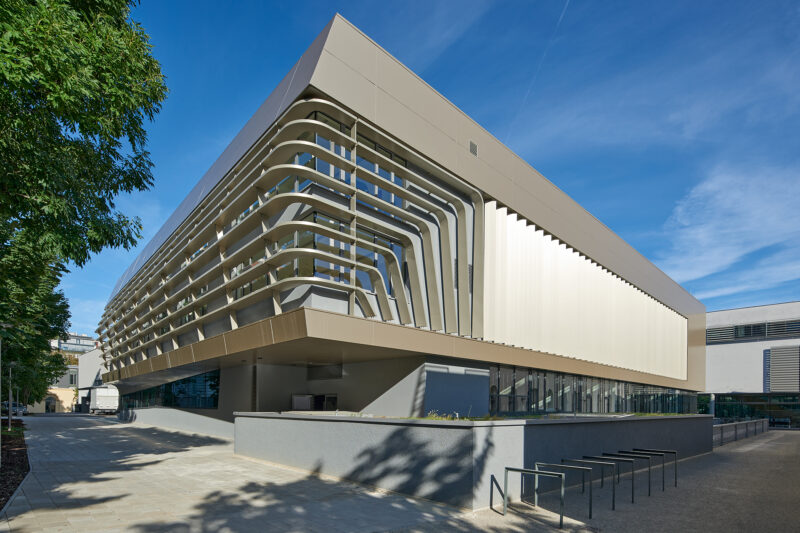
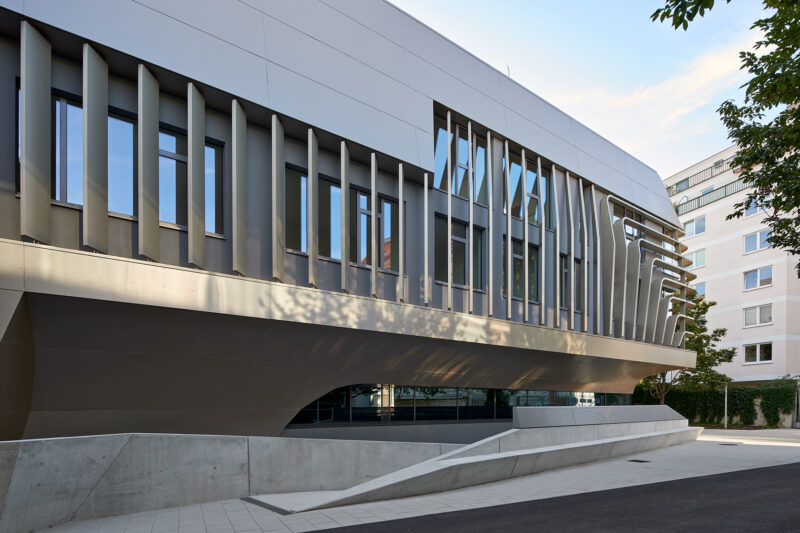
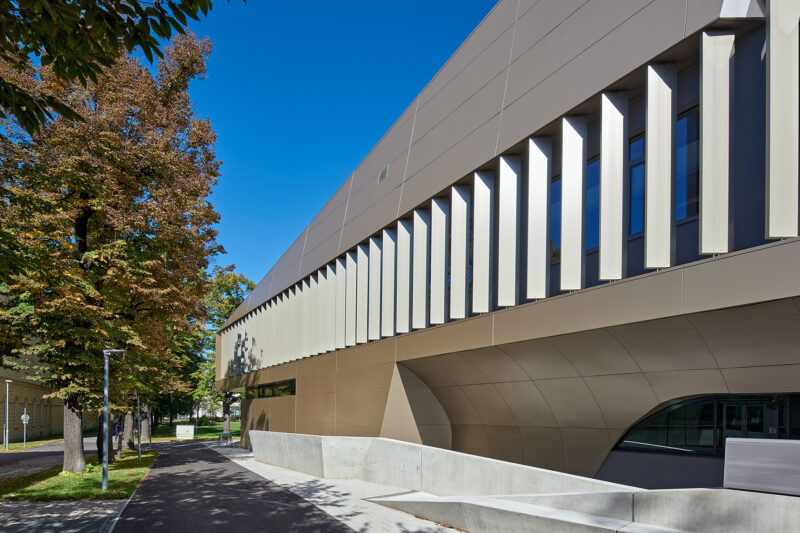
Line of vision
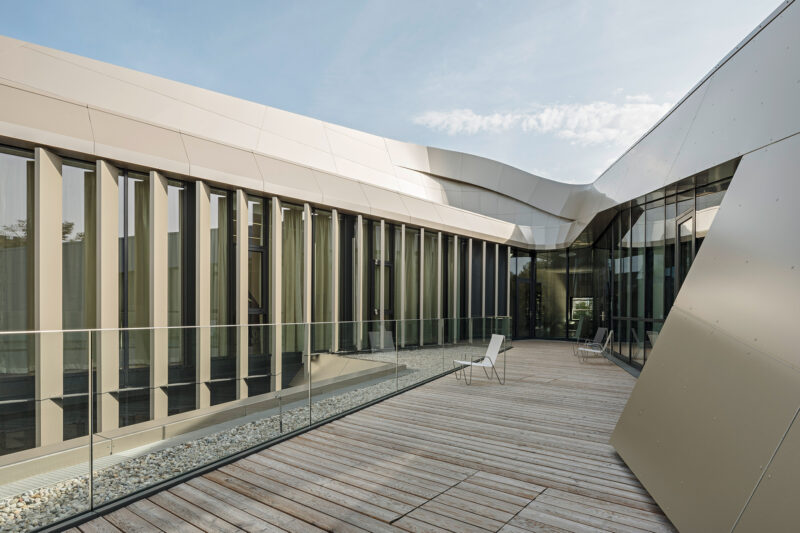
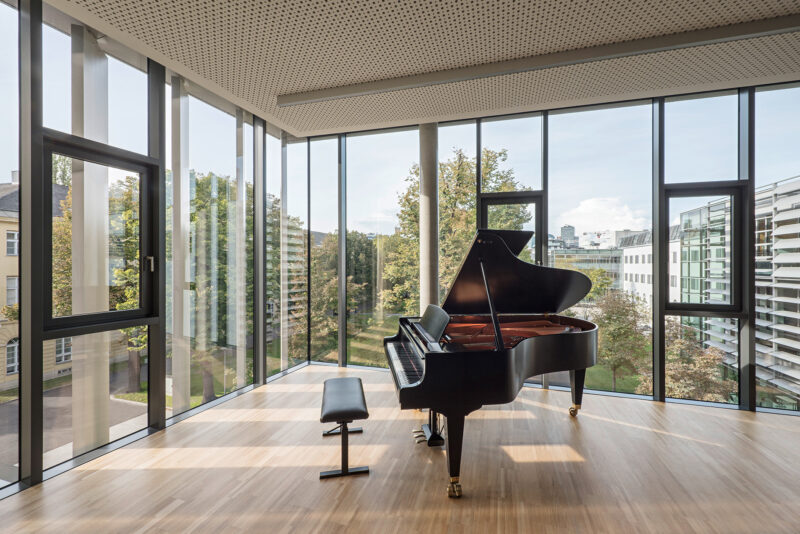
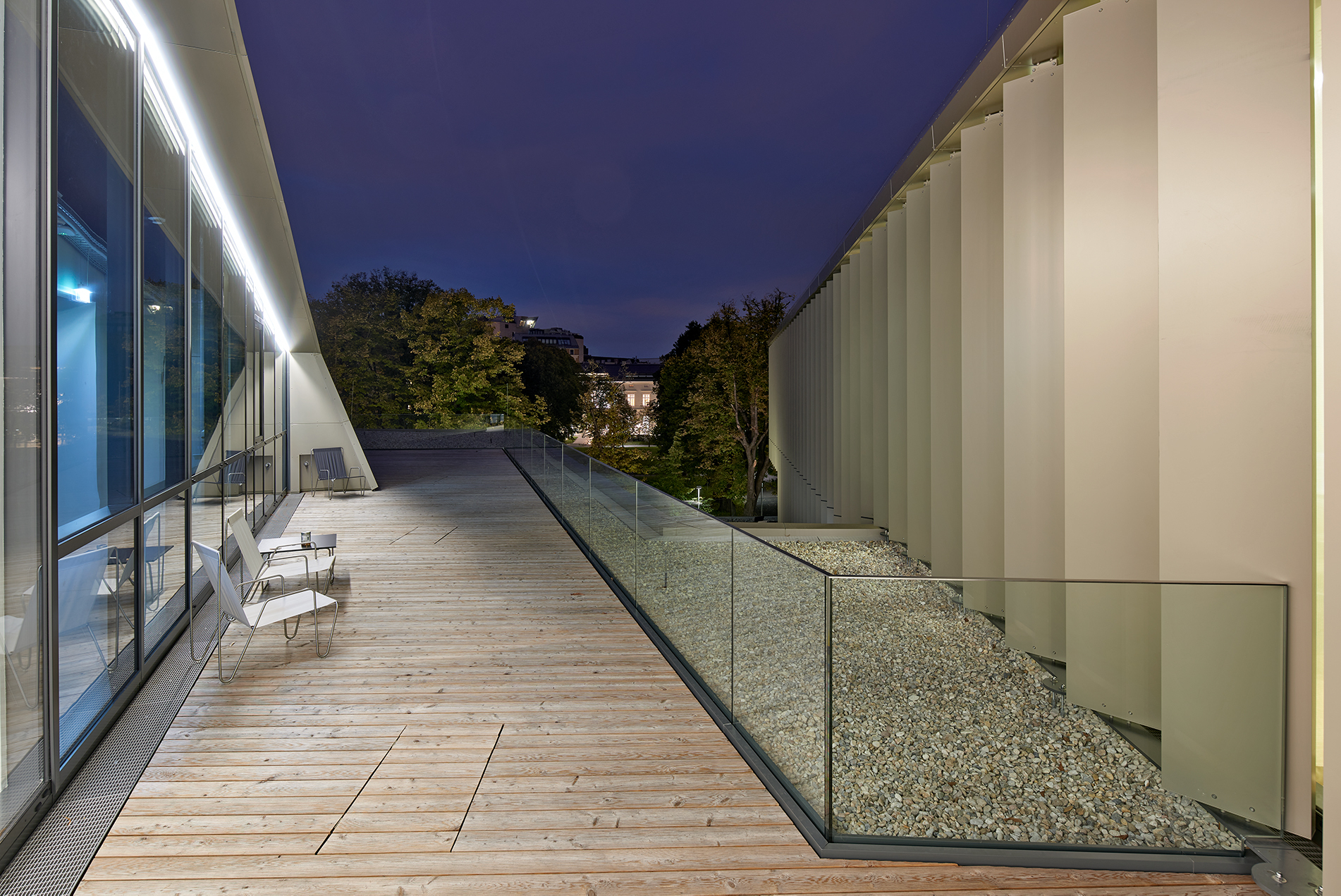
Circulation
In the southeast there is a double flight staircase with a goods lift that connects all the areas to which heavy items must be transported with the delivery bay. The main staircase is a spatially composed circulation and encounter zone which relates to the campus and the city and brings students and teachers to the institutes and interested members of the public to the halls. If you take the route downwards you pass the seminar area of the Film Academy to arrive in the Klangtheater of the Institute for Electro-acoustic Music and Composition. If you take the route upwards you reach the centre of the main level of the Film Academy. Continuing along the stairs you have crossed the building on the diagonal and arrive at the concert hall with a view outside. The main staircase is flanked by a glazed passenger lift that allows all levels to be reached barrier-free. Despite the routes across the building each institute can be closed off, while the halls that are accessible to the public and their foyer zones are kept accessible. Both staircases are designed as escape stairs with all the necessary measures such as glazing, sprinkler systems, fire protection curtains or pressure ventilation.
Sound tracks everywhere...
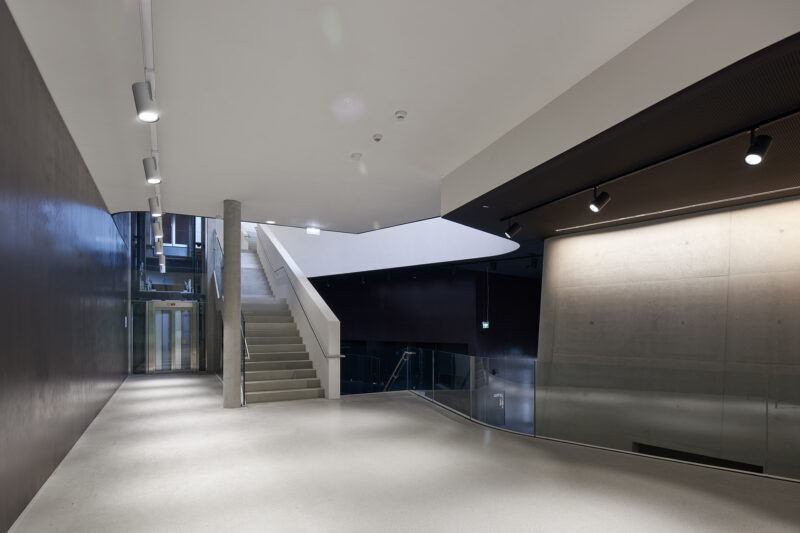
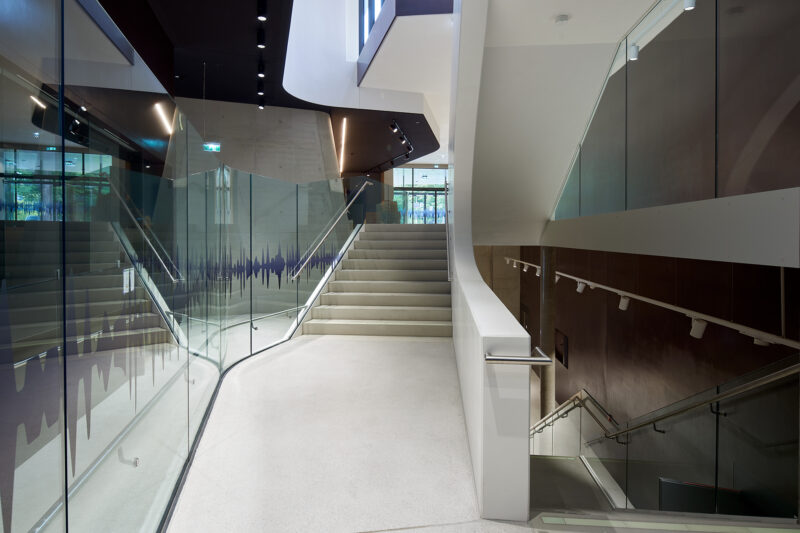
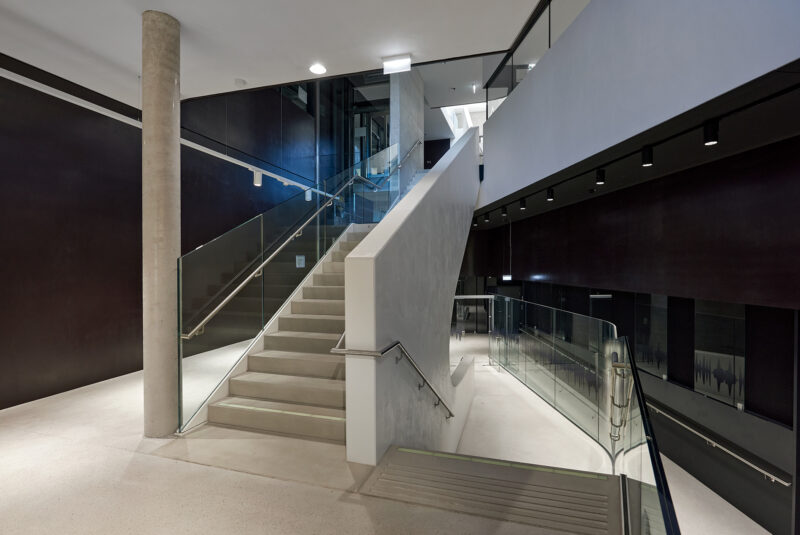
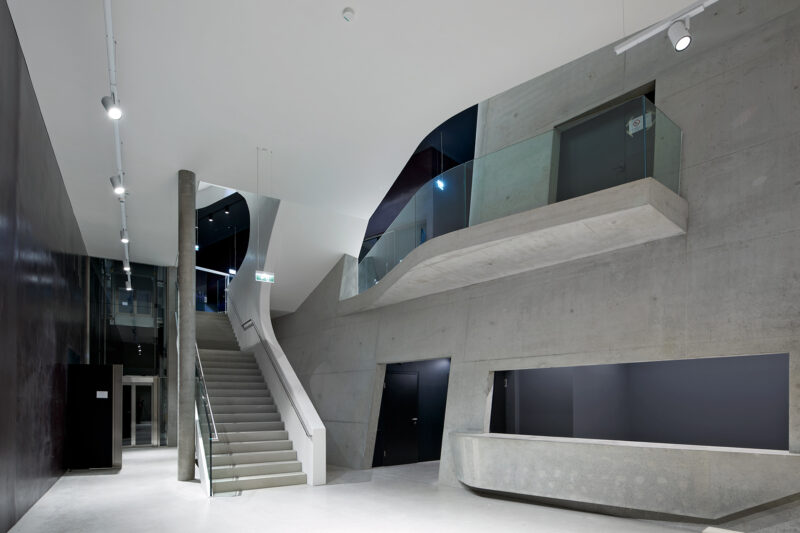
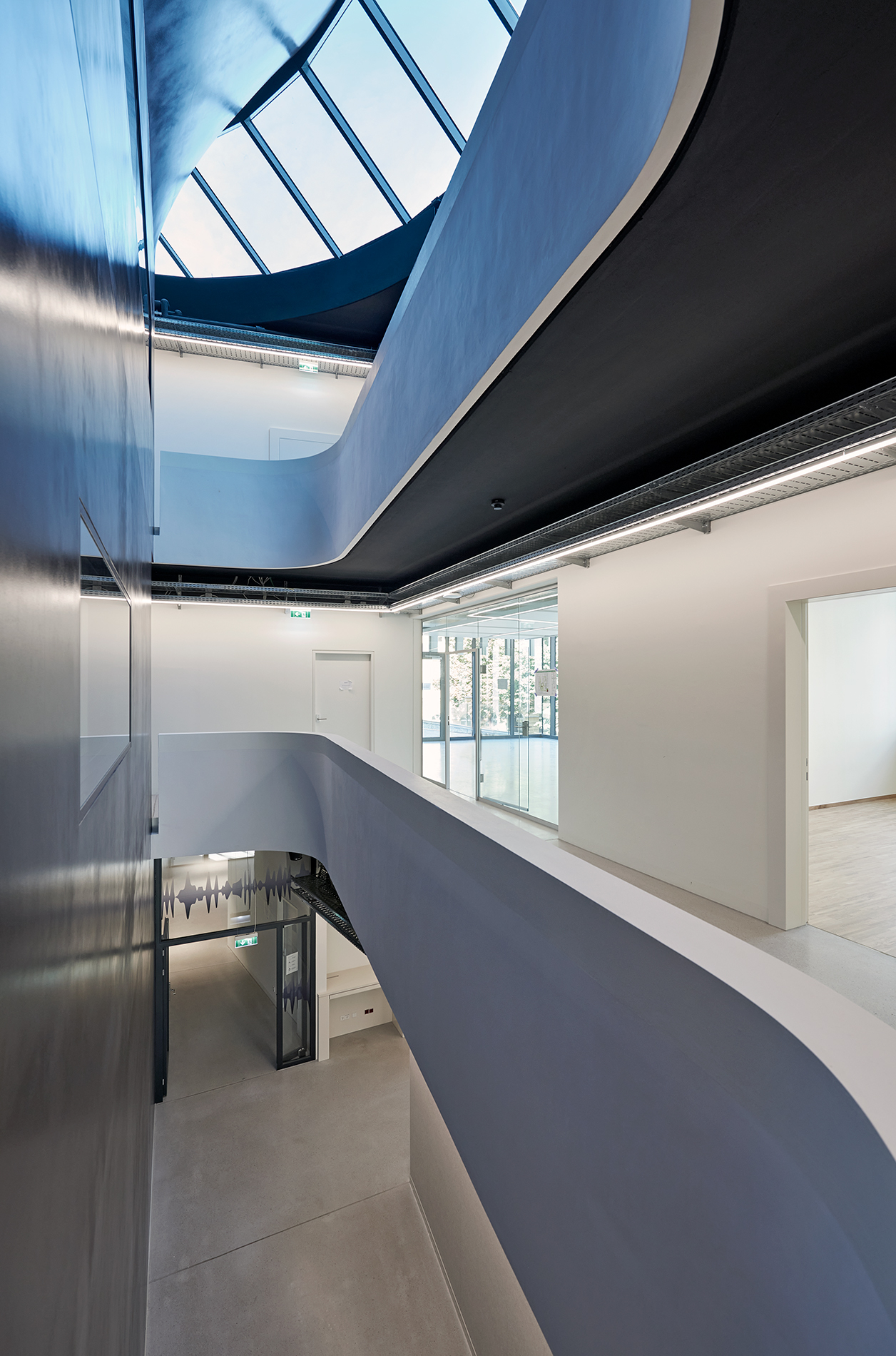
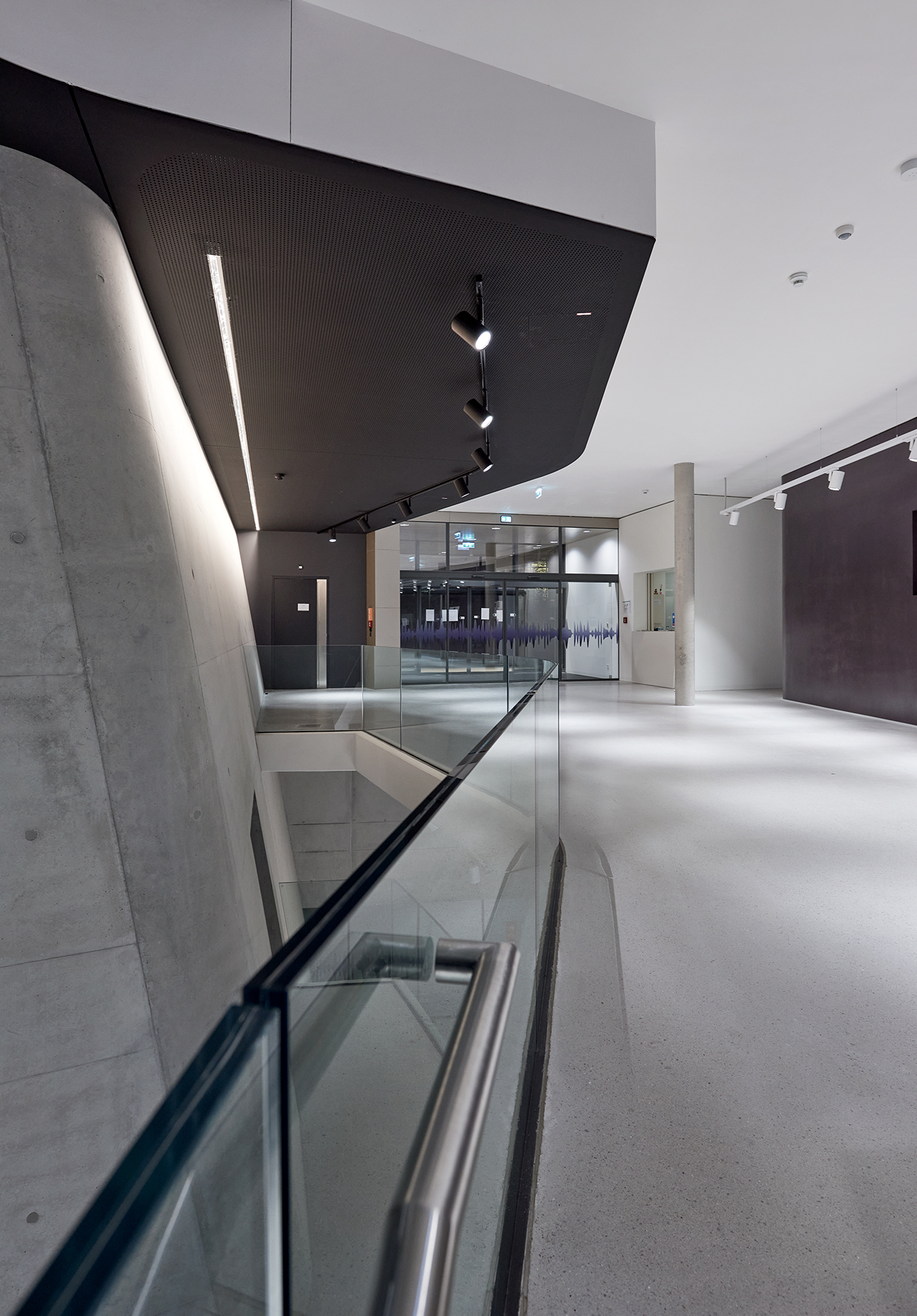
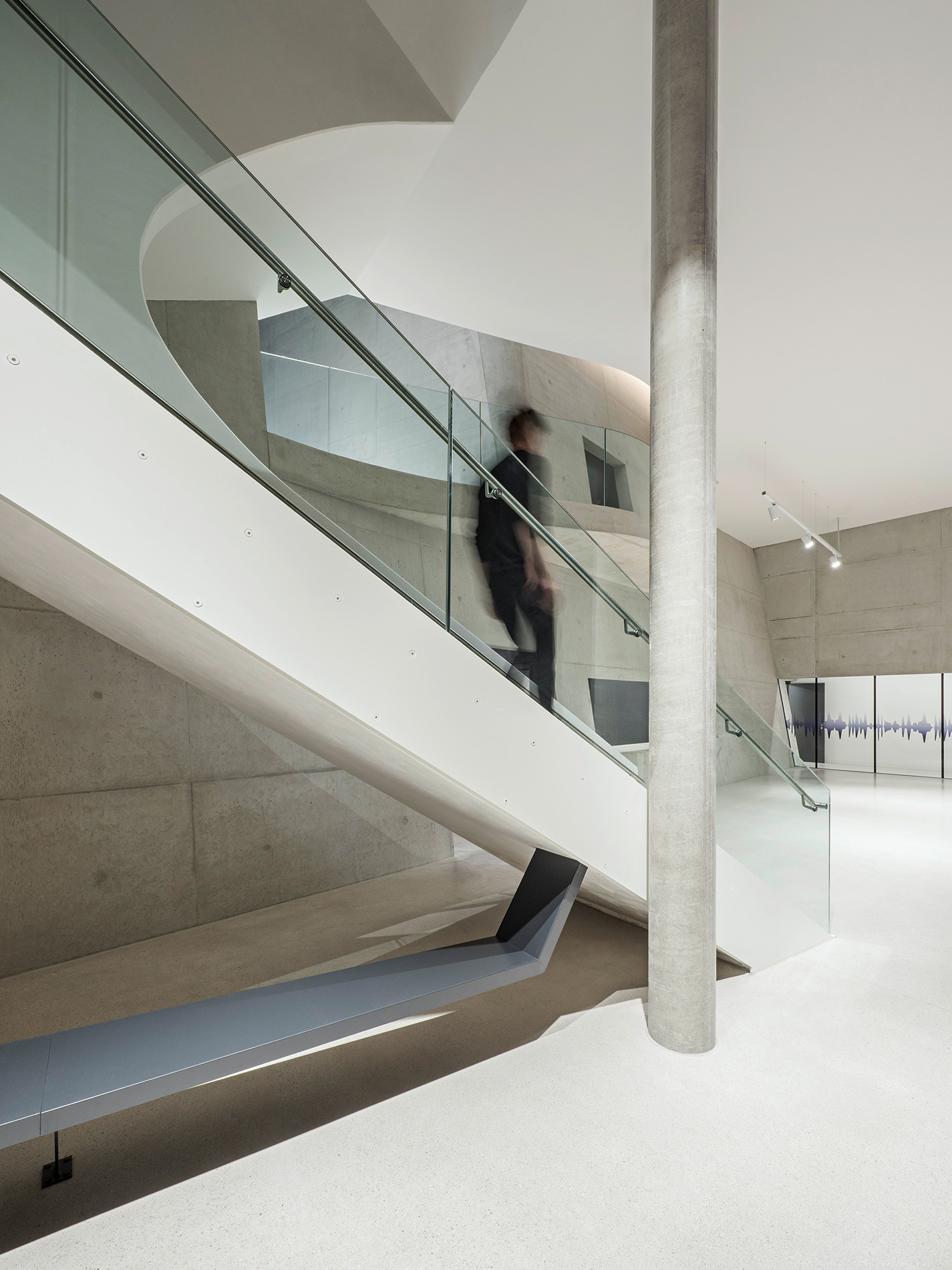
Building acoustics
For all rooms and halls with exacting acoustic requirements a space-in-a-space building method is proposed. The load-bearing reinforced concrete structure is completely separated from the structure (also solid) that forms the interior space, and is carried by a mass-spring system. The three biggest producers of sound, the Klangtheater, the recording room and the Art House cinema, are positioned independently of each other at basement level so that no structure-borne sound can be transmitted to other parts of the building. The loads of the concert hall, which, of course, is also built according to the space-in-a-space method using the mass-spring system, are transferred through the building and down to the foundations by a separate structure, so that here, too, no adverse effects can arise. The entire Institute for Keyboard Instruments is placed on its own floating reinforced concrete slab, independent of the primary reinforced concrete slab. All the rooms with exacting acoustic requirements are separated from each other by solid walls of the requisite thickness.
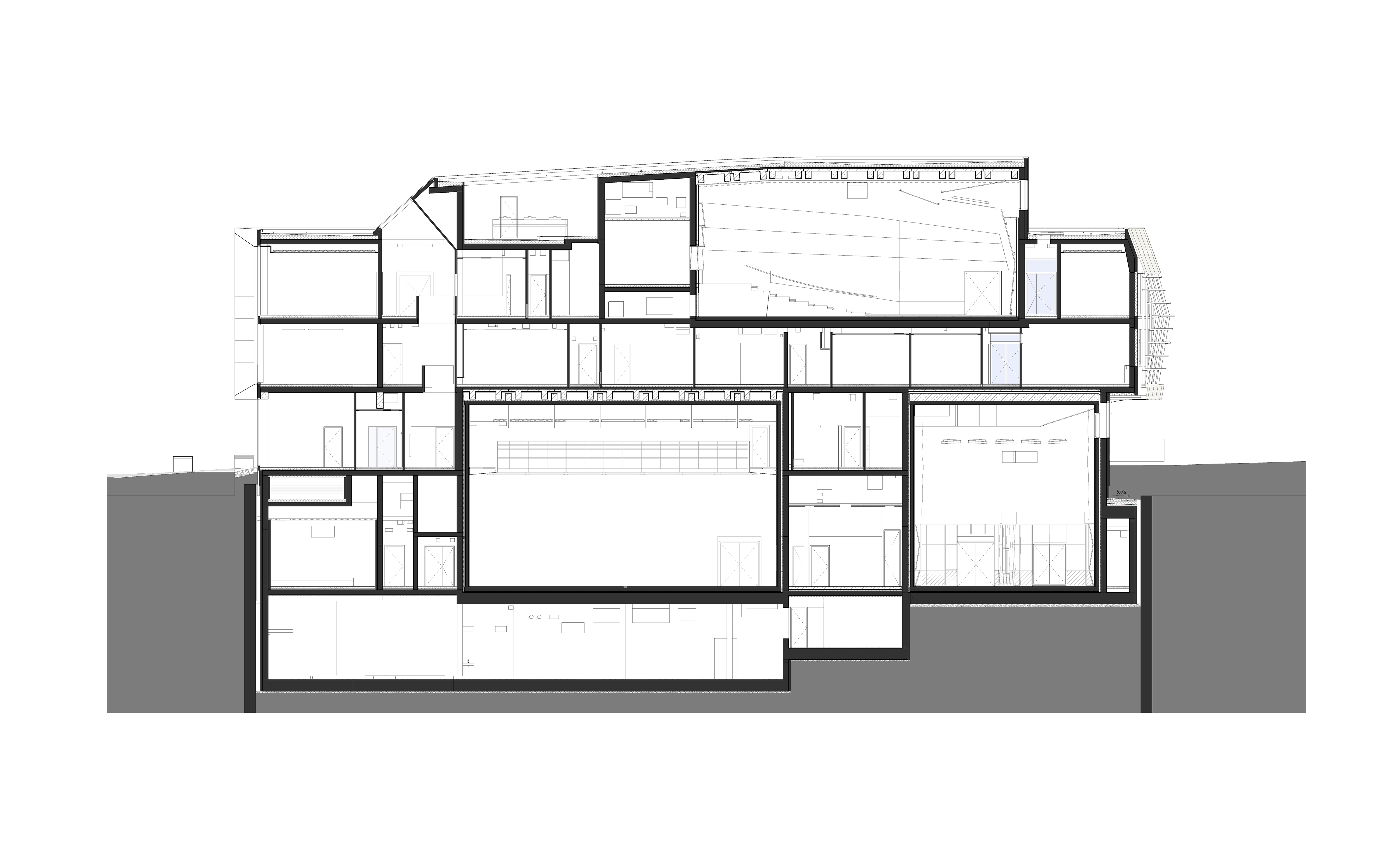
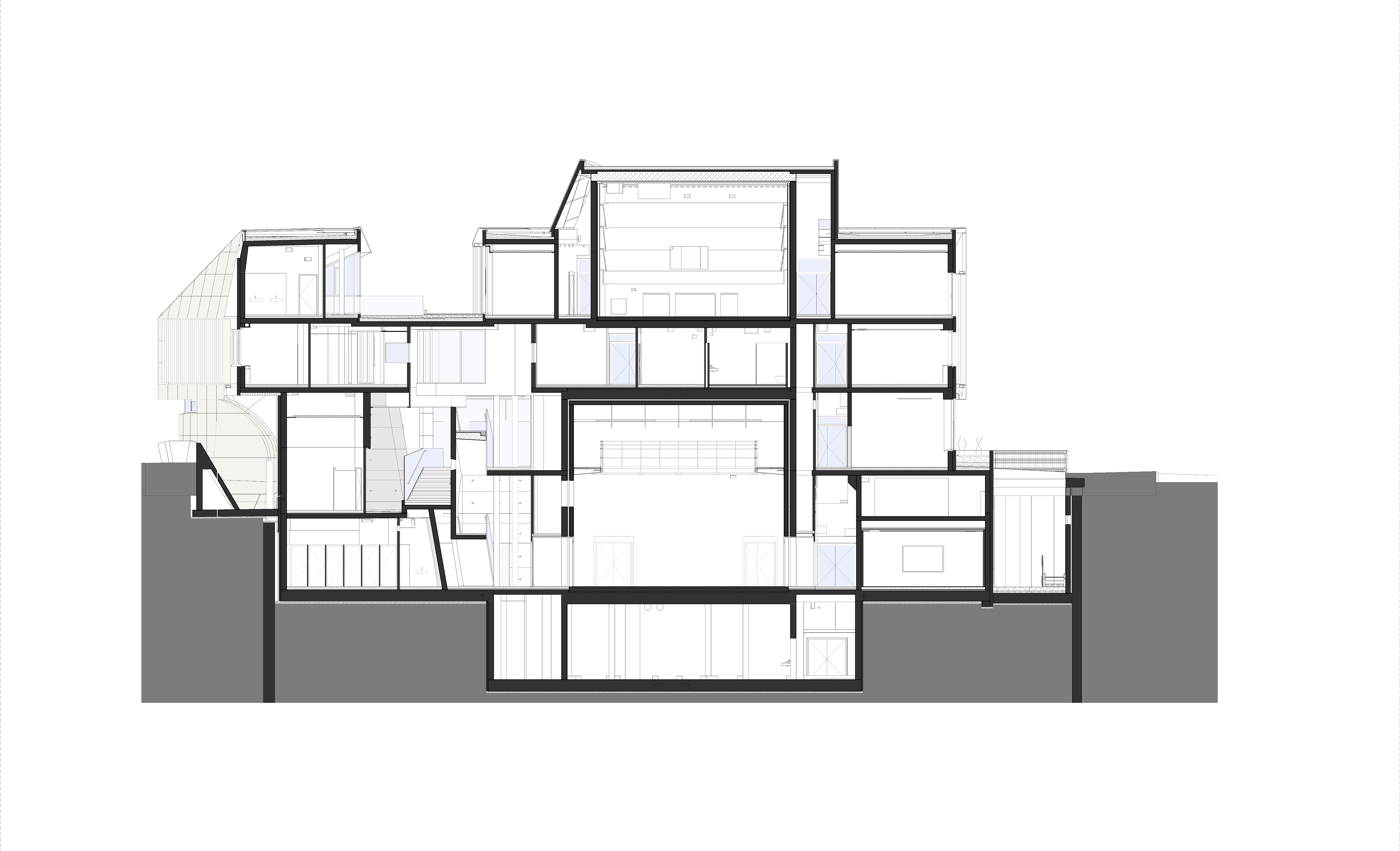
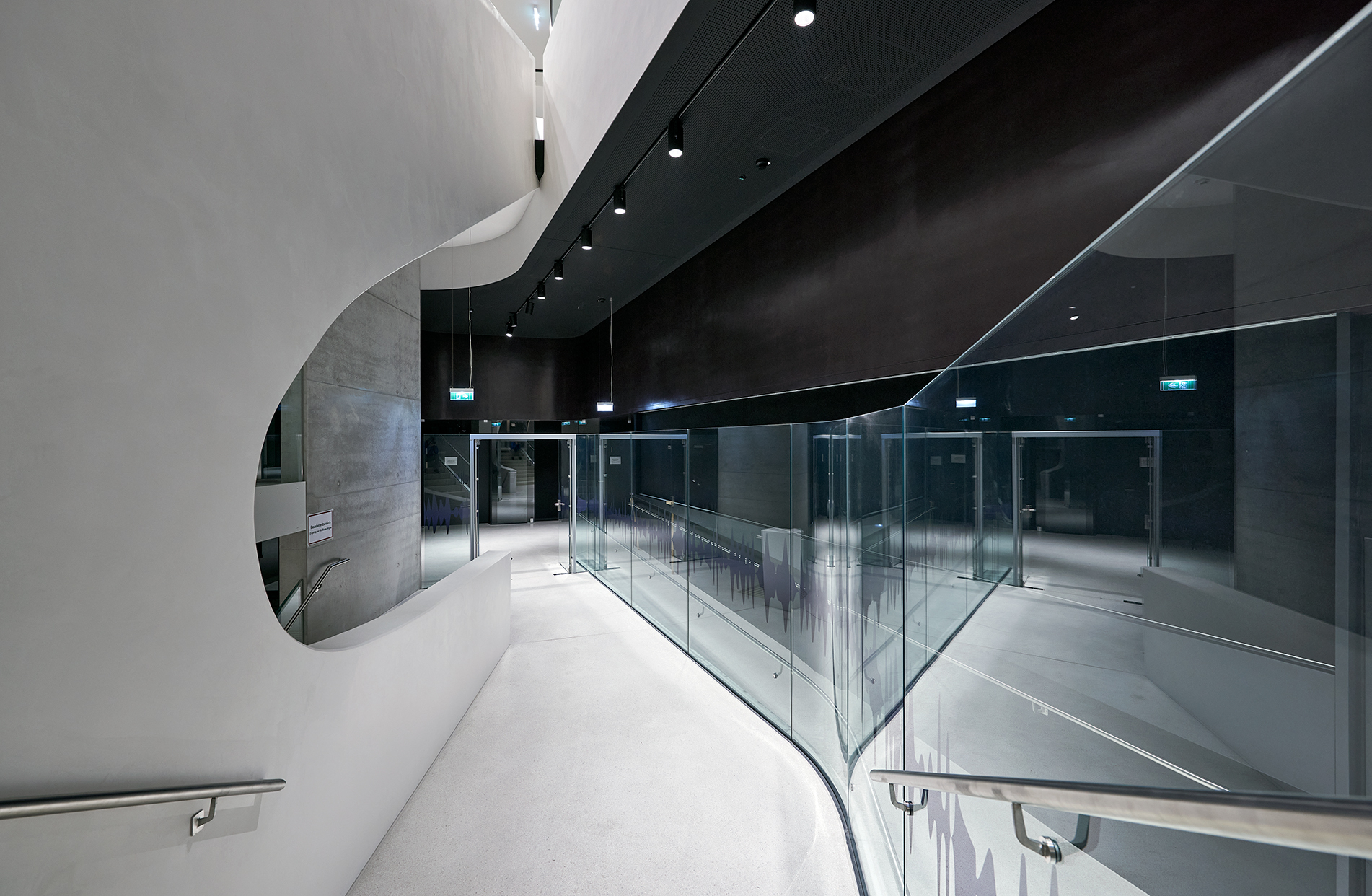
The internal organisation is based on the requirements in terms of function and building acoustics, and the aim is to give each institute the greatest degree of compactness combined with maximum exposure to daylight. For reasons of acoustics the Institute for Electro-acoustic Music and Composition with the large halls (the Klangtheater (sound theatre), and the recording hall) which form its nucleus is placed at basement level, along with a generously sized foyer zone. Through a sunken courtyard its teaching spaces
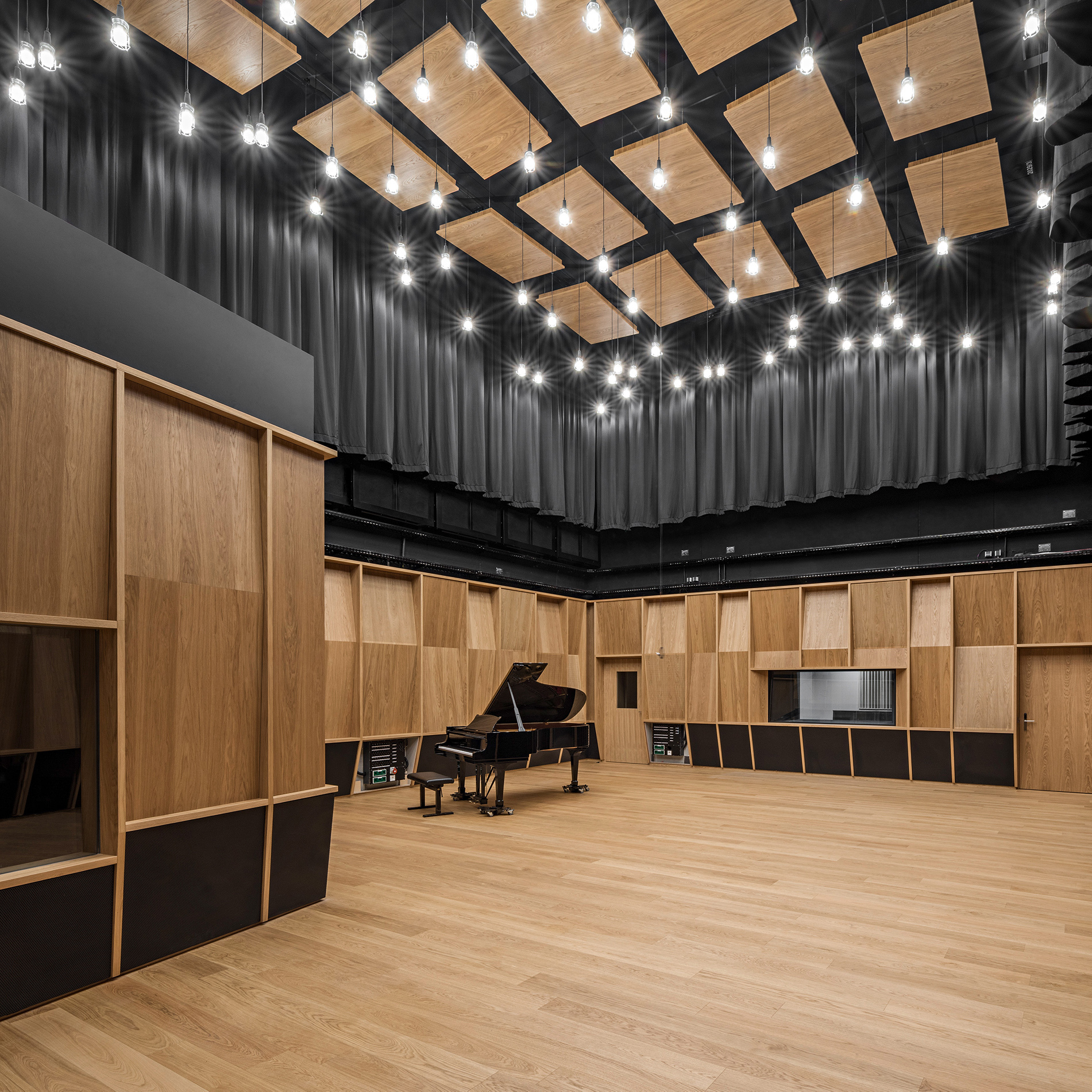
receive sufficient natural east light. The institute’s administration rooms are also east-facing and are located on the ground floor as is the main foyer. In terms of floor area the Film Academy is the largest institute with the greatest number of rooms that must be lit naturally. It takes up the entire 1st floor, which, in accordance with the building regulations, is also the largest in area. To generate more facade area for daylight a wing is folded inwards, creating a large terrace as a side effect.
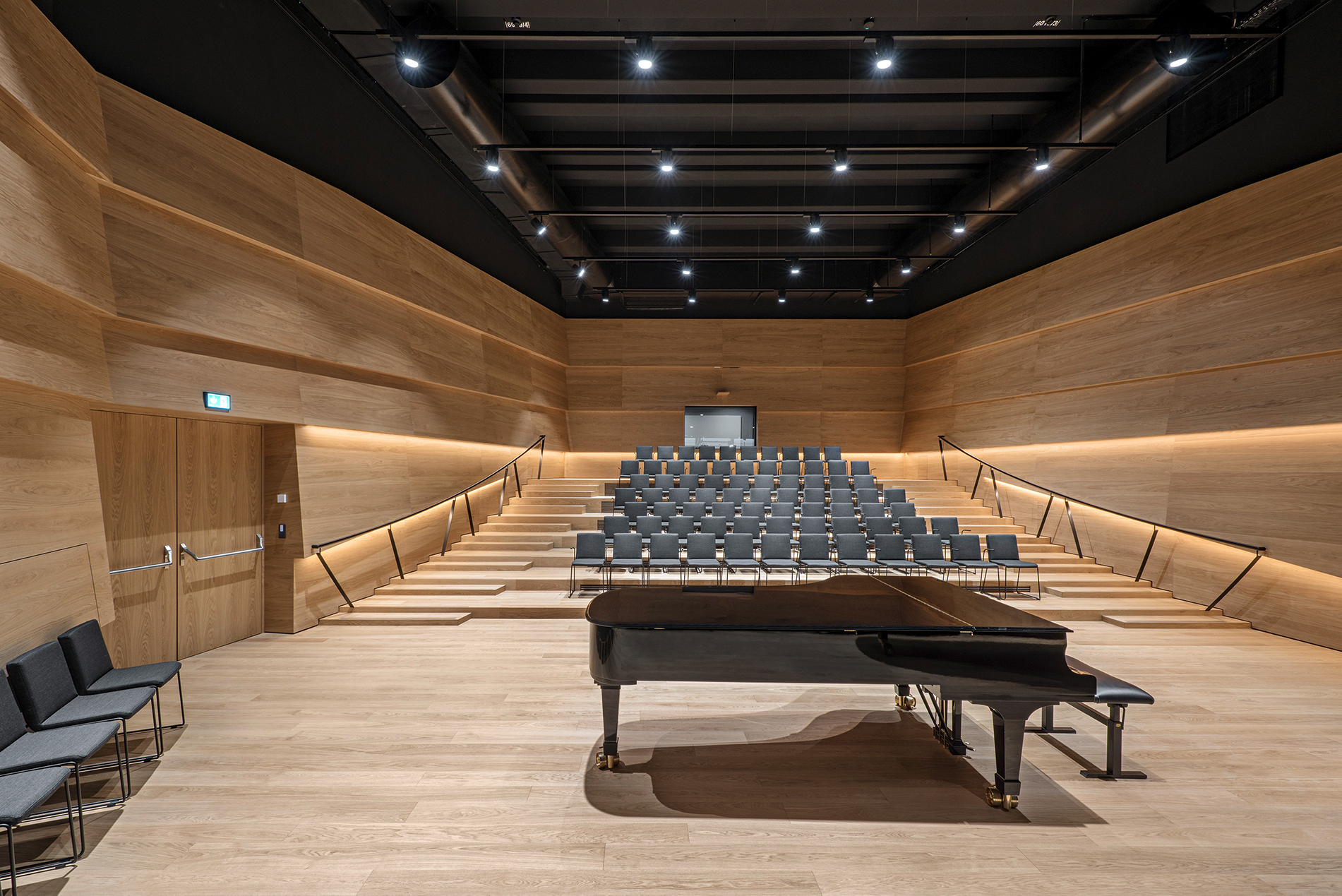
The ART HOUSE CINEMA is placed so that the public can access it directly at ground floor level. The lower level of the cinema is directly connected with an intermediate level inserted in the void of the basement. At this point a direct pedestrian connection to the neighbouring Building G is possible.
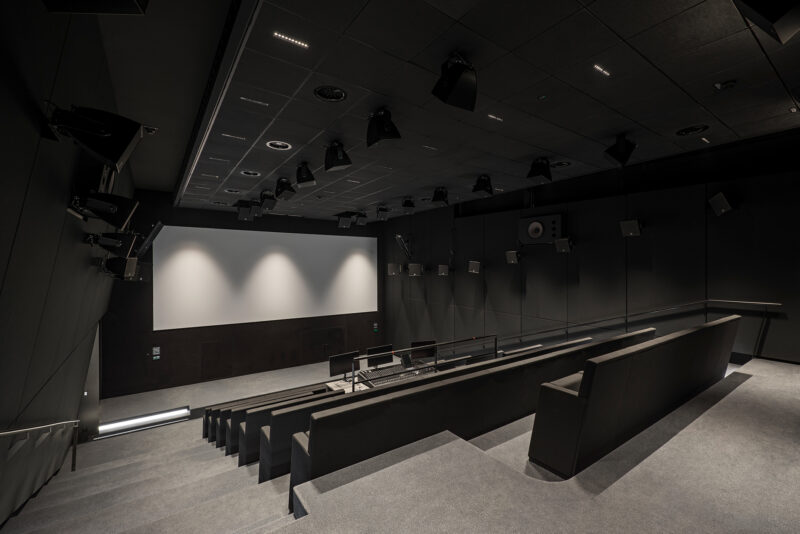
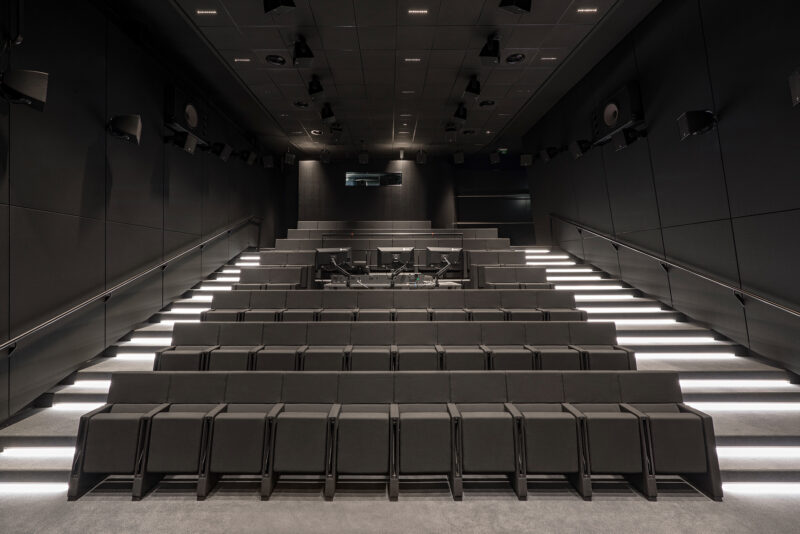
Room acoustics
For the room acoustics two fundamental construction principles are taken into account: diffusion and sound damping in a space. The requisite diffusion is achieved by means of suitable acoustic wall and ceiling claddings, for example concave elements. This creates sound focuses and offers a basis for good audibility. In those spaces that are used for research and teaching, variable acoustics are employed to allow an experimental experience of different room acoustics. In large areas of the building the degree of sound damping in the rooms can be changed by means of sound-absorbent curtains.
The concert hall is fitted with solid wood elements on the walls and ceiling that reflect sound back into the public. These elements also function as their own “resonating bodies”. The floor is a heavy wooden floor. In order to be able to control the reverberation time acoustically highly effective and movable textile elements or curtains are envisaged for a defined zone between the top edge of the wall elements and the ceiling elements.
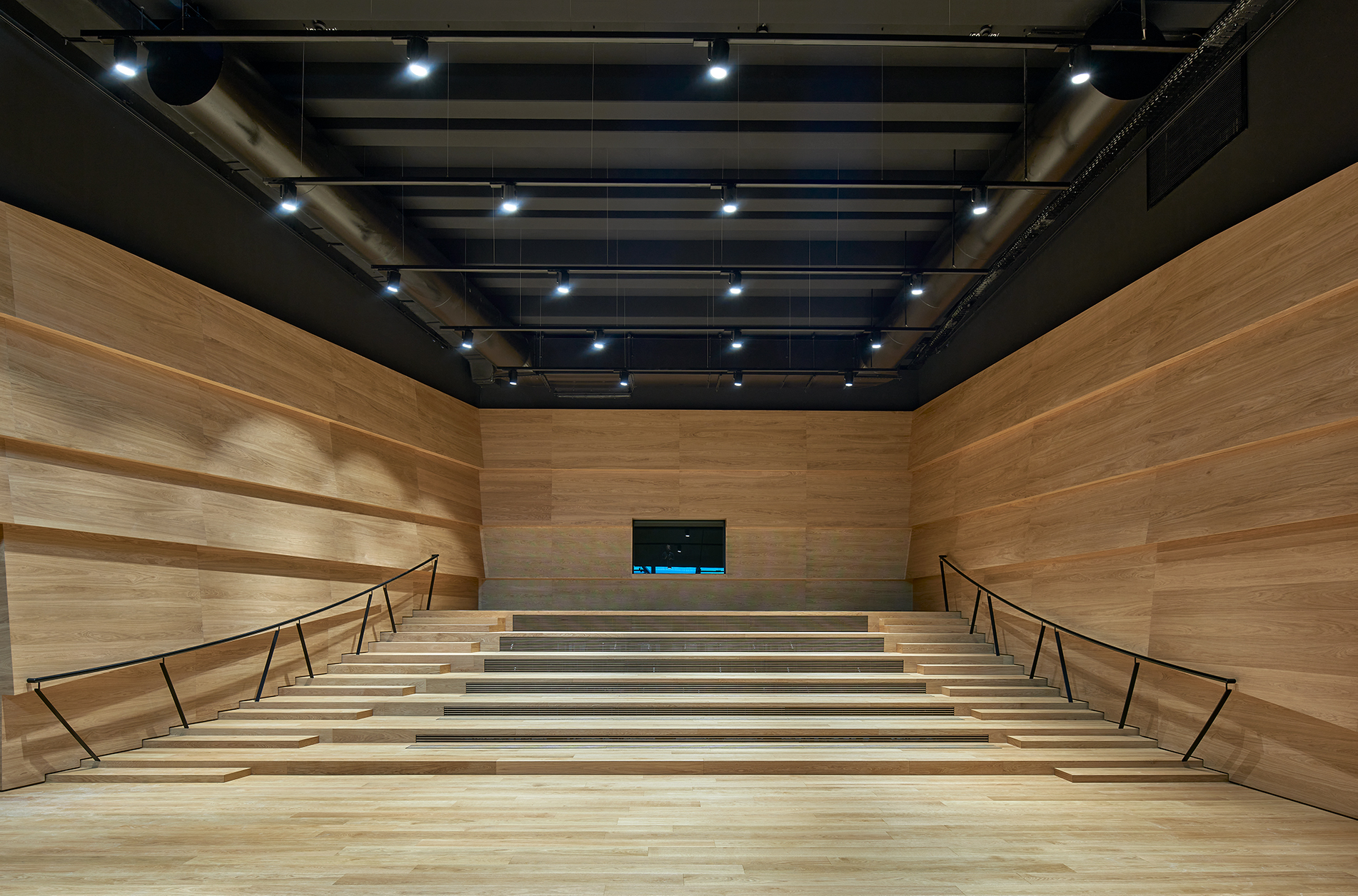
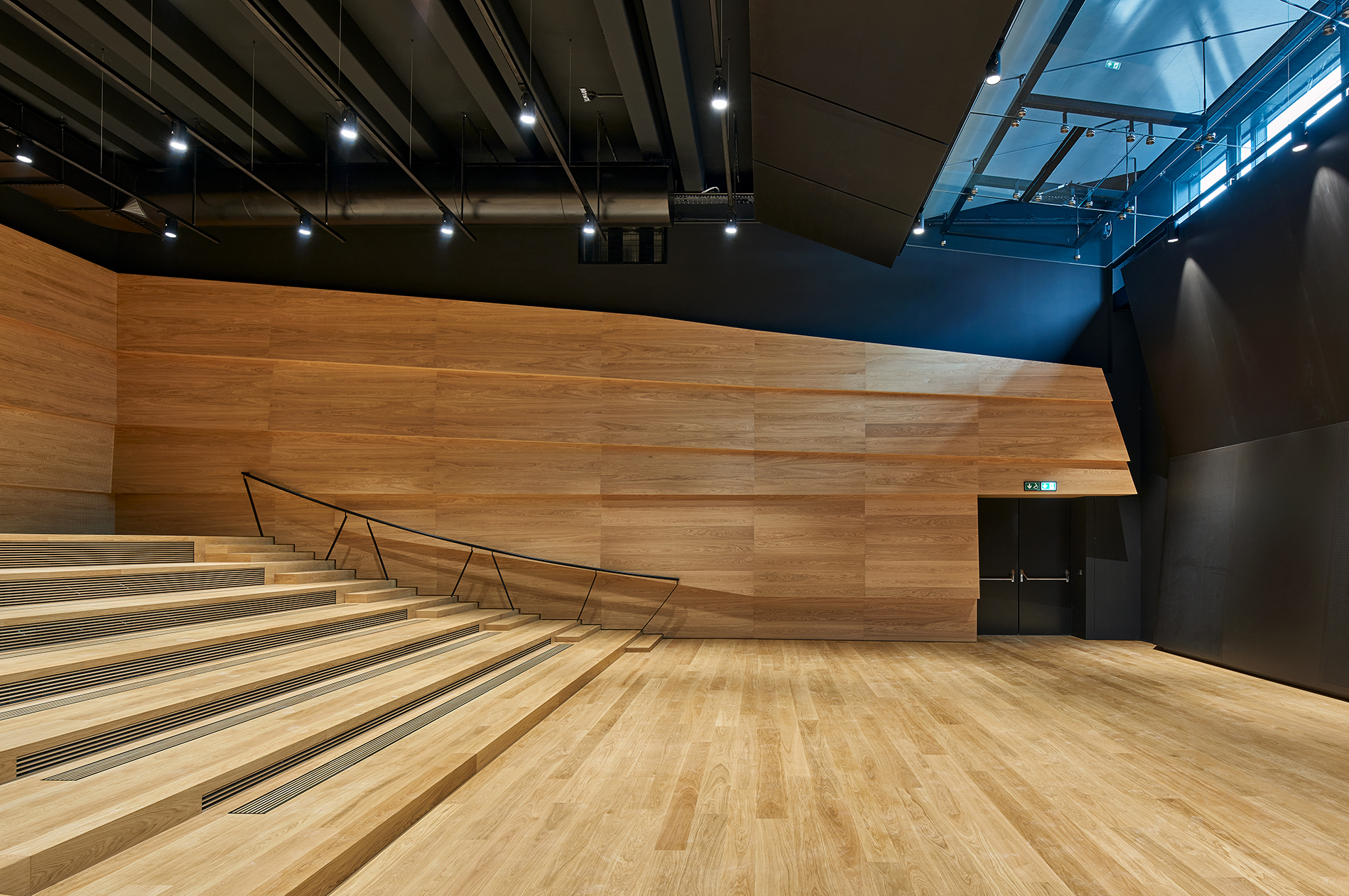
The Klangtheater is a space for experiments and is therefore completely equipped with sound-absorbent blinds that are fitted at a sufficient distance to the inner shell of the space-in-a-space construction and ensure maximum variability of the room acoustics.
Clearly, all these measures listed are not made at the cost of the usable floor area but are located within the construction thicknesses.
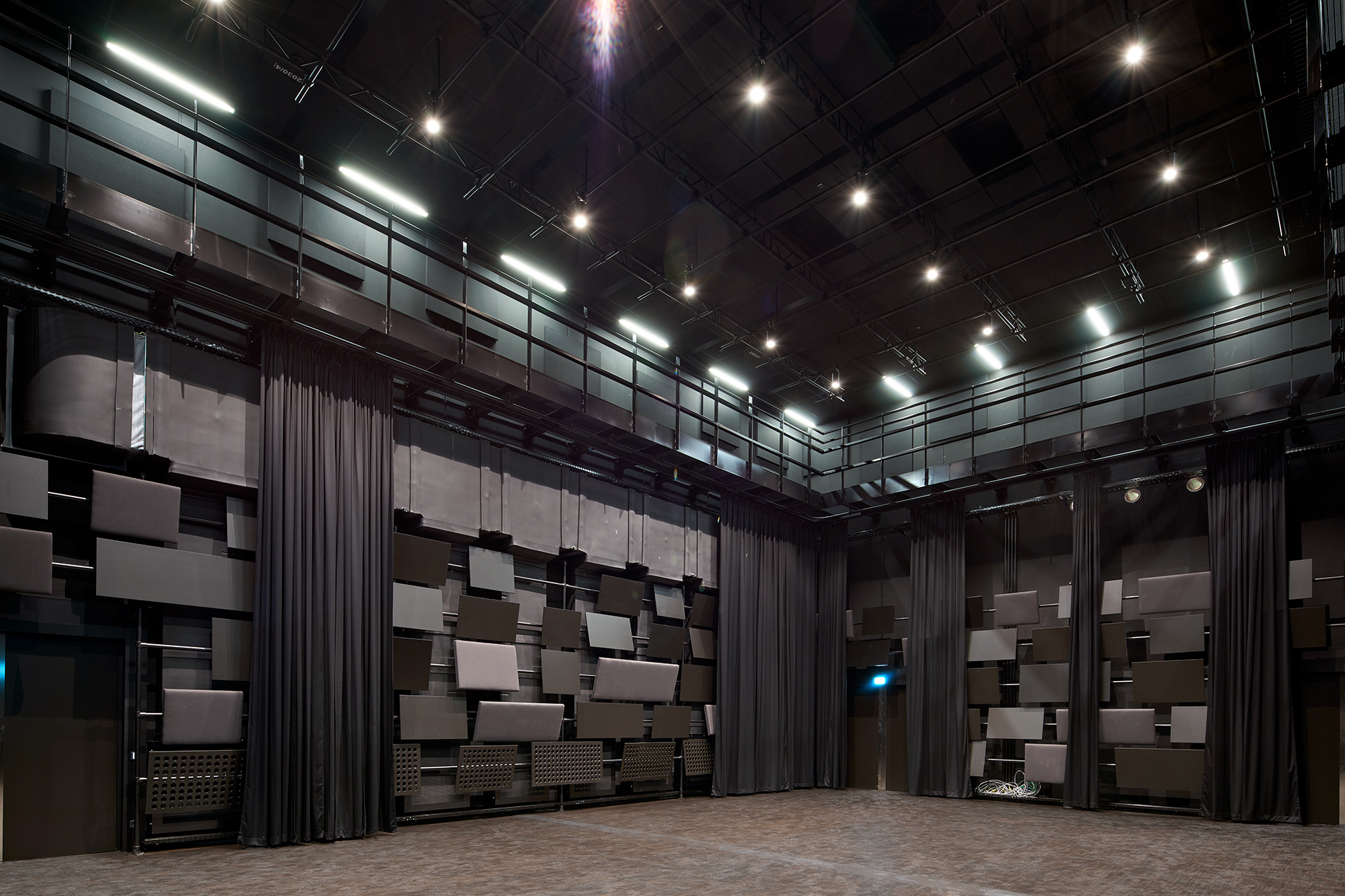
To meet the stringent demands with regard to soundproofing buffer areas, such as corridors and intermediate rooms, are used. For example: the concert hall is separated by a less acoustically sensitive corridor area from the recording spaces below it, which is essential to achieve the level of soundproofing required. As regards acoustics door constructions often represent weak spots but that is not the case here, as sufficient room for door air-locks is planned in order to achieve a very high standard of sound proofing.
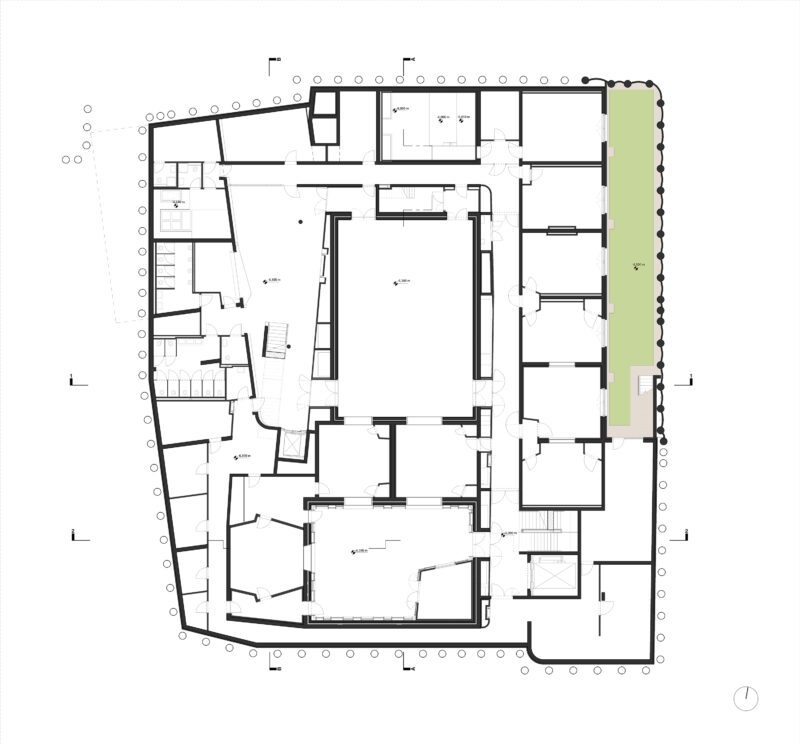
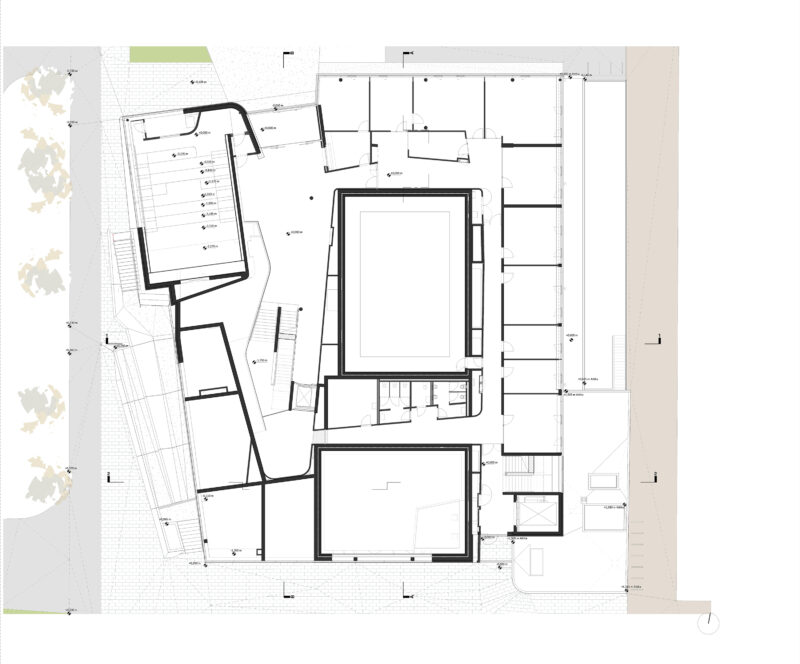
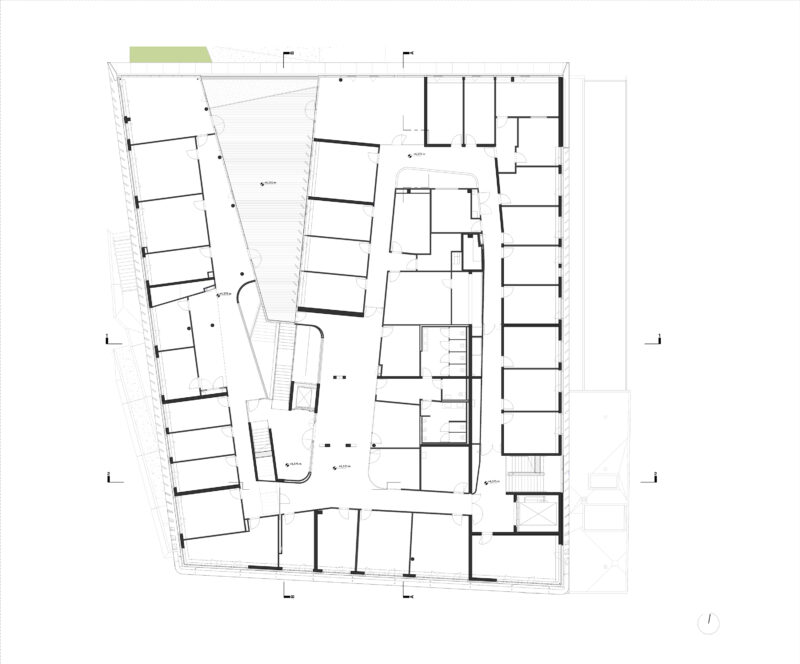
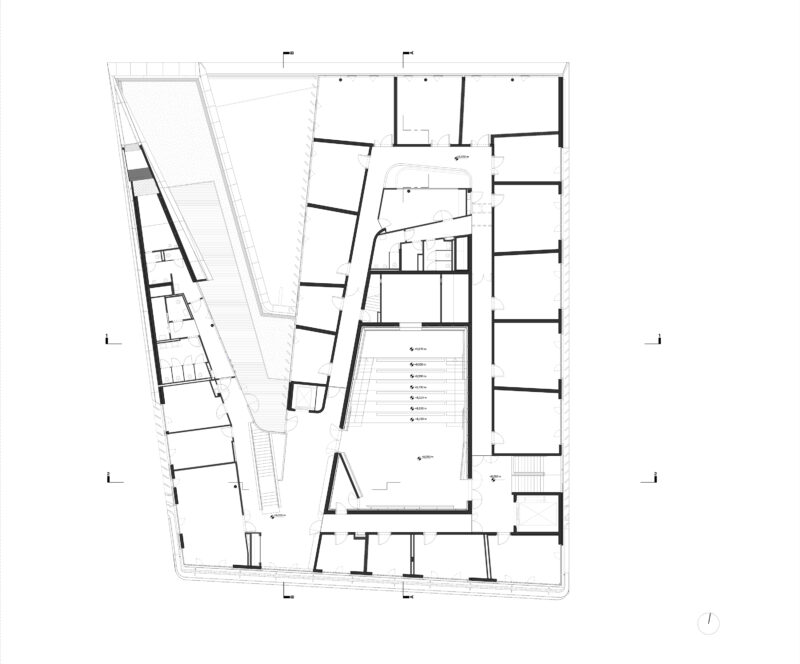
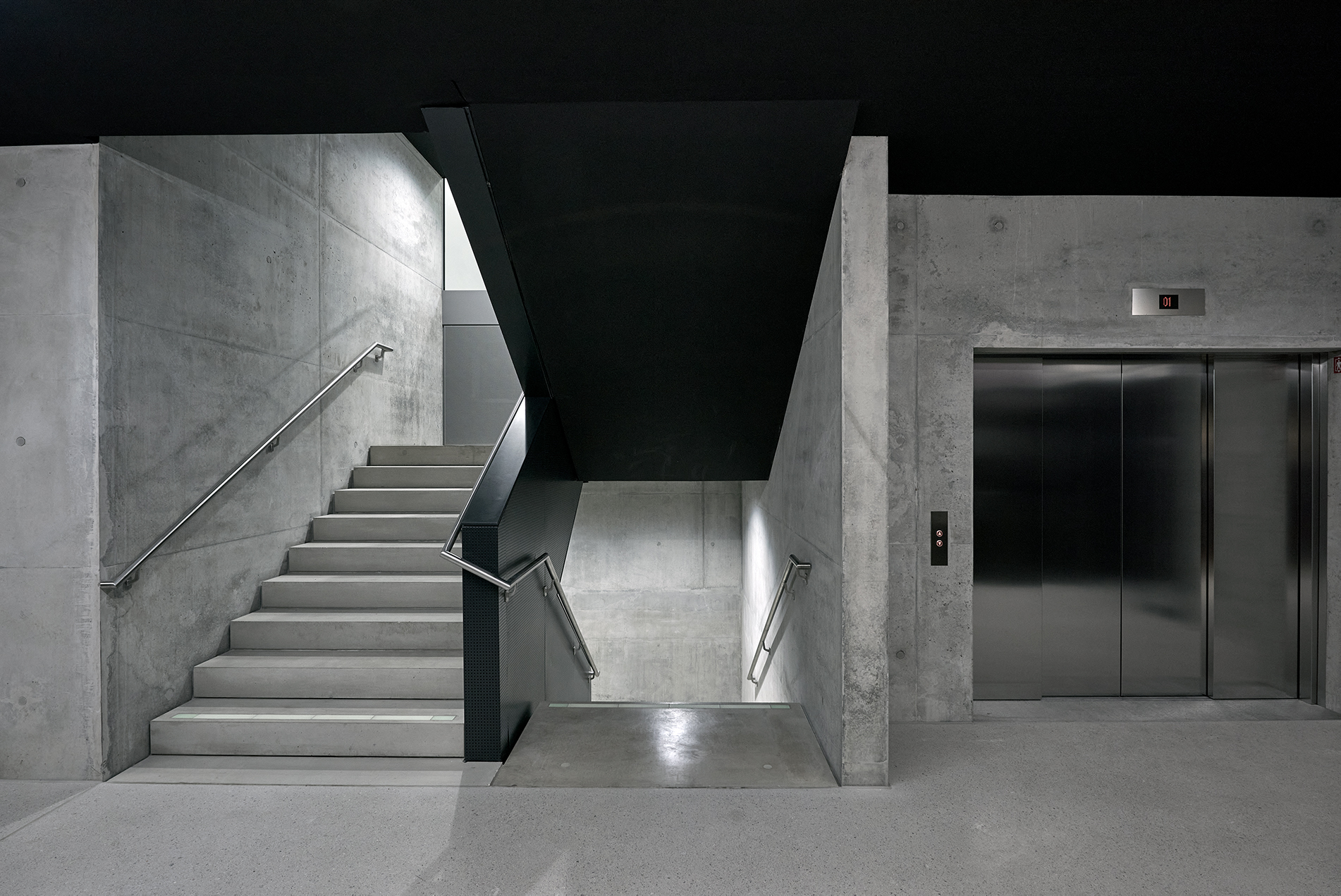
Architecture
Pichler & Traupmann Architects
Design team
Bartosz Lewandowski (team leader)
Luca Baumgartner
Peter Grandits
Fabian Lorenz
Project team
Alexander Tauber (project leader)
Mohammad Ekhlasi
Christoph Degendorfer
Patrik Drechsler
Klemens Gabriel
David Guisado
Barbara Jarmaczki
Joachim Kess
Daniel Moral T.
Jan Niklas Schöpf
Marvin Seifner
Milan Suchánek
Client
Bundesimmobiliengesellschaft m.b.H. (BIG), Vienna
Structural design
Fritsch Chiari und Partner ZT GmbH, Vienna
Structural fire protection
Norbert Rabl ZT GmbH, Graz
MEP engineering
Gawaplan - Haustechnik Anlagen GmbH, Vienna
Acoustics
Müller BBM GmbH, Planegg
Building physics
Prause iC ZT GmbH, Vienna
Facade technology
MDE Metalldesign Engineering GmbH, Vöcklabruck
Electrical engineering
Kubik Projekt GesmbH, Gießhübl
Hard facts
Start of planning: 2014
Start of construction: 2017
Completion: 2020
Site area: 14.602 m²
Usable floor area: 6.210 m²
Built area: 2.072 m²
Gross floor area: 7.370 m²
Location: Vienna 3rd District
Function: University building
Scope: Designer with responsibility for all design services
Photos
Toni Rappersberger, Vienna
Hertha Hurnaus, Vienna
Awards
2025 Austrian Concrete Award 2025, Cat. Education/Admin.
2024 ICONIC AWARD 2024: Innovative Architecture – Winner, Cat. ARCHITECTURE – Public/Culture/Education
2023 Staatspreis Architektur 2023, Cat. Admin/Research
2022 FIABCI Prix d'Excellence 2022 – WINNER Kat. Spezialimmobilien
2021 BUILT DESIGN AWARDS 2021 – Honorable Mention (Educational Category)
2021 ARCHITECTURE MASTERPRIZE – 2021 Architectural Design Award – Best of Best (Educational Buildings Category)
2021 Bauherrenpreis 2021, Nominierung
2021 The International Architecture Award 2021,The Chicago Athenaeum
2021 GEBAUT [2020], Stadt Wien – Architektur und Stadtgestaltung
2021 Architizer A+Awards 2021 Special Mention in the Architecture +Learning Category
